Forums
- Forums
- Duggy's Reference Hangar
- USAAF / USN Library
- Boeing 377 Stratocruiser
Boeing 377 Stratocruiser
Post a reply
- Go to Previous topic
- Go to Next topic
- Go to Welcome
- Go to Introduce Yourself
- Go to General Discussion
- Go to Screenshots, Images and Videos
- Go to Off topic
- Go to Works in Progress
- Go to Skinning Tips / Tutorials
- Go to Skin Requests
- Go to IJAAF Library
- Go to Luftwaffe Library
- Go to RAF Library
- Go to USAAF / USN Library
- Go to Misc Library
- Go to The Ops Room
- Go to Made in Germany
- Go to Campaigns and Missions
- Go to Works in Progress
- Go to Juri's Air-Raid Shelter
- Go to Campaigns and Missions
- Go to Works in Progress
- Go to Skinpacks
- Go to External Projects Discussion
- Go to Books & Resources
-
6 years agoSun Jan 02 2022, 06:03amDuggy
 Main AdminThe Boeing 377 Stratocruiser was a large long-range airliner developed from the C-97 Stratofreighter military transport, itself a derivative of the B-29 Superfortress. The Stratocruiser's first flight was on July 8, 1947. Its design was advanced for its day; its innovative features included two passenger decks and a pressurized cabin, a relatively new feature on transport aircraft. It could carry up to 100 passengers on the main deck plus 14 in the lower deck lounge; typical seating was for 63 or 84 passengers or 28 berthed and five seated passengers.
Main AdminThe Boeing 377 Stratocruiser was a large long-range airliner developed from the C-97 Stratofreighter military transport, itself a derivative of the B-29 Superfortress. The Stratocruiser's first flight was on July 8, 1947. Its design was advanced for its day; its innovative features included two passenger decks and a pressurized cabin, a relatively new feature on transport aircraft. It could carry up to 100 passengers on the main deck plus 14 in the lower deck lounge; typical seating was for 63 or 84 passengers or 28 berthed and five seated passengers.
The Stratocruiser was larger than the Douglas DC-6 and Lockheed Constellation and cost more to buy and operate. Its reliability was poor, chiefly due to problems with the four 28-cylinder Pratt & Whitney R-4360 Wasp Major radial engines and their four-blade propellers. Only 55 Model 377s were built for airlines, along with the single prototype.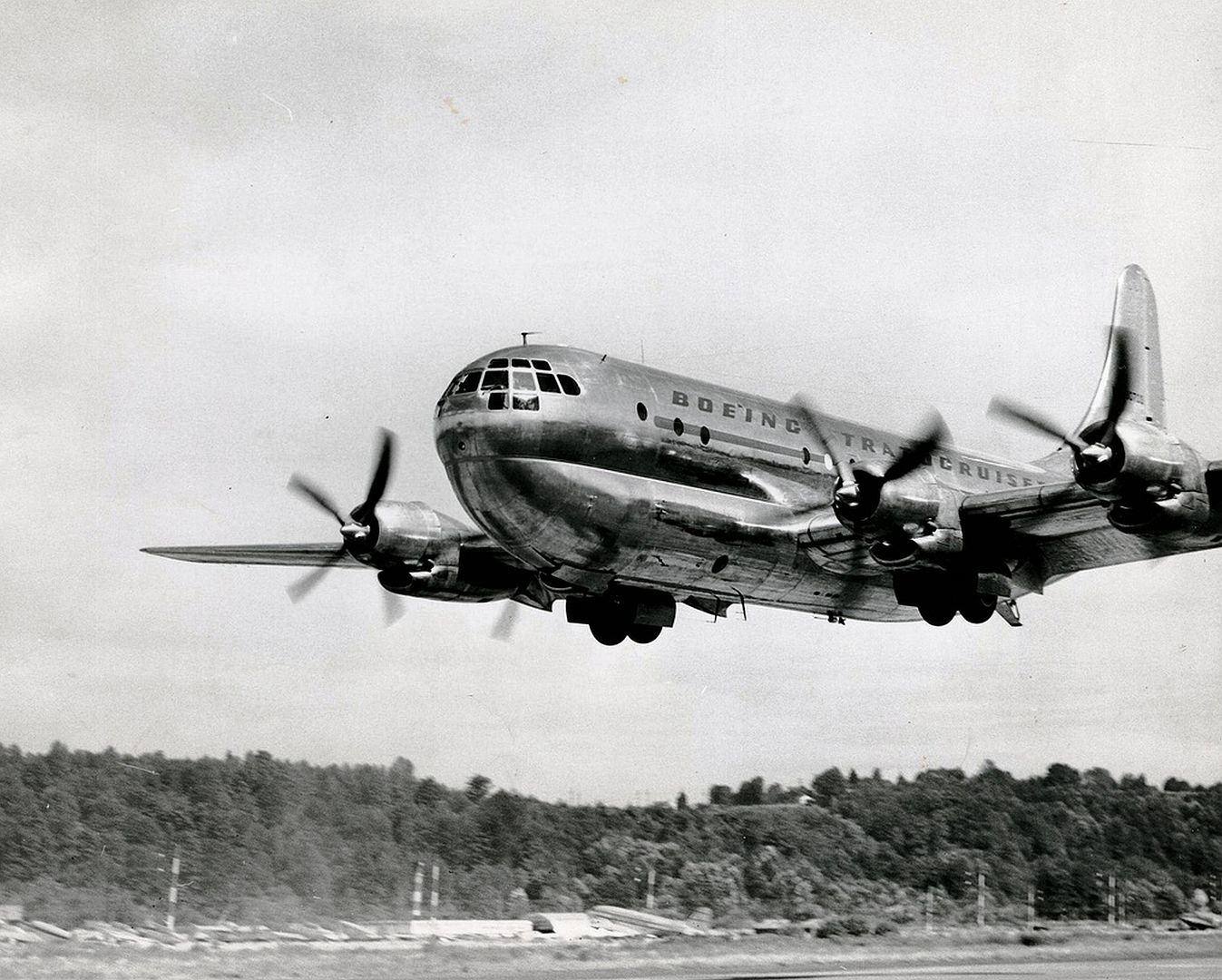
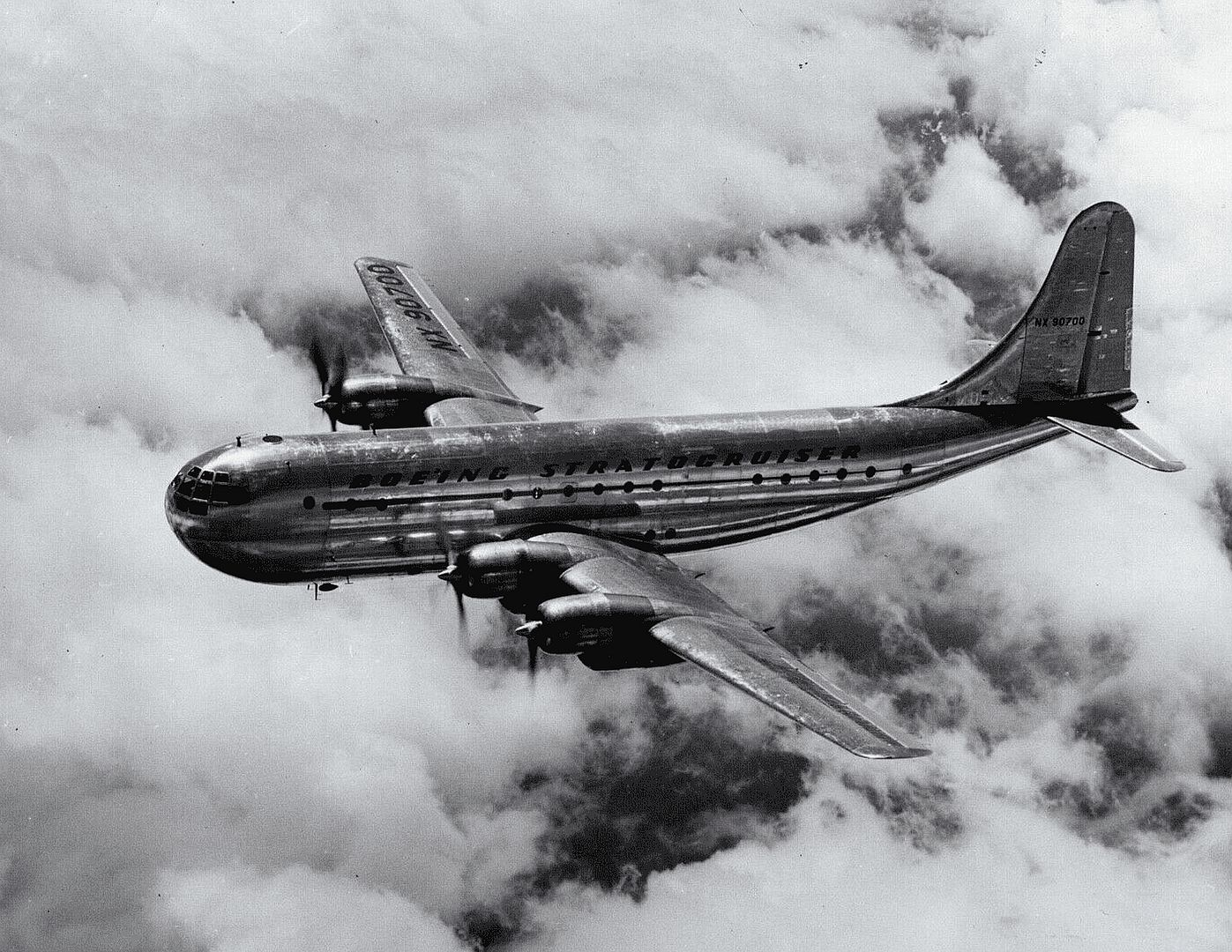
Design and development
The Boeing 377 Stratocruiser was a civil derivative of the Boeing Model 367, the Boeing C-97 Stratofreighter, which first flew in late 1944. William Allen, who had become President of The Boeing Company in September 1945, sought to introduce a new civilian aircraft to replace reduced military production after World War II. Although in a recession in late 1945, Allen ordered 50 Stratocruisers, spending capital on the project without an airline customer.
On November 29, 1945 Pan American World Airways (Pan Am) became the launch customer with the largest commercial aircraft order in history, a $24,500,000 order for 20 Stratocruisers. Earlier in 1945 a Boeing C-97 had flown from Seattle to Washington, D.C. nonstop in six hours and four minutes; with this knowledge, and with Pan Am President Juan Trippe's high regard for Boeing after their success with the Boeing 314 Clipper, Pan Am was confident in ordering the expensive plane.
The 377 shared the distinctive design of the C-97, with a "double-bubble" fuselage cross-section, resembling a figure-8, with 6,600 ft? (187 m?) of interior space, allowing for pressurization of a large cabin with two passenger decks. Outside diameter of the upper lobe was 132 inches, compared to 125 inches for the DC-6 and other Douglas types (and 148 inches for today's 737). The lower deck served as a lounge, seating 14. The 377 had innovations such as higher cabin pressure and air conditioning; the superchargers on the four Pratt & Whitney R-4360 engines increased power at altitude and allowed constant cabin pressure. The wing was the Boeing 117 airfoil, regarded as the "fastest wing of its time". In all, 4,000,000 man-hours went into the engineering of the 377.
First flight of the 377 was on July 8, 1947, two years after the first commercial order. The flight test fleet of three 377s underwent 250,000 mi (217,000 nmi; 402,000 km) of flying to test its limits before certification.
Operational history
As the launch customer, Pan Am was the first to begin scheduled service, from San Francisco to Honolulu in April 1949. At the end of 1949 Pan Am, BOAC and American Overseas Airlines (AOA) were flying B377s transatlantic, while Northwest Orient Airlines was flying in the United States; in January 1950 United began flights from San Francisco to Honolulu. By late 1950, Northwest Orient was serving New York City, Chicago, Detroit, Minneapolis/St. Paul, Milwaukee and Spokane with the aircraft and was also operating the Stratocruiser nonstop between Seattle and Honolulu. For a short time Pan Am flew their B377s to Beirut; however, after 1954 no B377 was scheduled east of Europe or west of Singapore. Also in 1954, United was operating nonstop service with the Stratocruiser between Los Angeles and Honolulu and also between Seattle and San Francisco. According to its August 1, 1954 system timeable, United's service between Honolulu and Los Angeles and San Francisco operated with the B377 featured an all first class cabin at this time as well. In 1955 BOAC B377s had 50 First Class seats (fare $400 one way New York to London) or 81 Tourist seats (fare $290). In 1956 Pan Am was flying the B377 from Los Angeles and San Francisco to Sydney with stops at Honolulu, Canton Island and Suva (via Nadi Airport in Fiji). By 1958 Pan Am was operating the Stratocruiser between Seattle and Fairbanks, Juneau and Ketchikan in Alaska and between Seattle and Whitehorse in the Yukon Territory of Canada.
The 377 was one of the most advanced, and capable of the propeller-driven transports, and among the most luxurious, but its service record was marred by five incidents, two with fatalities, arising from the Hamilton Standard hollow propellers fitted to early production aircraft. A total of 56 were built, one prototype (later reconditioned) and 55 production aircraft. Within six years of first delivery, the Stratocruiser had carried 3,199,219 passengers; it had completed 3,597 transcontinental flights, and 27,678 transatlantic crossings, and went between the United States and South America 822 times. In these first six years, the Stratocruiser fleet had flown 169,859,579 miles (273,362,494 km). It was also one of but a few double deck airliners, another being its French contemporary, the Breguet Deux-Ponts, as well as Boeing's own 747 and the Airbus A380. The last 377 was delivered to BOAC in May 1950. On this delivery flight, Boeing engineer Wellwood Beall accompanied the final 377 to England, and returned with news of the de Havilland Comet, the first jet airliner, and its appeal.
The last flight of the 377 with United was in 1954, the last with BOAC was in 1959, and the last Northwest was in September 1960. By November 1960 only a weekly Pan Am Honolulu to Singapore flight remained, and the 377 was retired by Pan Am in 1961.
In 1953, "United's Ray Ireland ...described the Stratocruiser as unbeatable in luxury attraction but is uneconomical. Ireland said PAA's Stratocruiser competition to Hawaii induced United to buy the plane originally." In 1950 United's seven B377s averaged $2.46 "direct operating cost" per plane-mile, and "Indirect costs are generally considered to be equal or greater than the direct costs." Most other operators at the time were utilizing Stratocruisers on VVIP class long-range routes where higher prices could be charged, off-setting the higher operating costs. The sole exception to this was Northwest Airlines, who managed to keep the aircraft competitive on a series of shorter U.S. domestic routes where the aircraft's higher payload capacity benefited further from lower fuel weights. United however could not integrate what had become by 1954 a six-plane fleet of 377s. The lack of spares and the inability to cross-train their Douglas crews with the type relegated their Stratocruiser primarily to its Hawaii routes, where they faced stiff competition from Pan American and Northwest. By the end of that year the six United B377s were all sold to BOAC in a deal carefully orchestrated by Douglas aircraft. BOAC, which was short of aircraft after the grounding of the Comet 1, paid between US$895,000 and US$995,000 per unit and spares for what were essentially five-year old aircraft. An equivalent brand new Douglas DC-7 cost US$775,000 in 1954.
Boeing set never-exceed speed at 351 mph (305 kn; 565 km/h) IAS, but in testing, the B377 reached 409 mph (355 kn; 658 km/h) IAS (about 500 mph (430 kn; 800 km/h) TAS) in a 15?20 degree dive at 13,500 ft (4,100 m) Typical airline cruise was less than 300 mph (260 kn; 480 km/h); in August 1953, Pan Am and United B377s (and United DC-6s) were scheduled between Honolulu and San Francisco (2,398 mi (3,859 km)) in 9 h 45 min each way.
The longest (by distance) B377 nonstop flights were made by Pan Am from Tokyo to Honolulu during four winter seasons beginning in 1952?1953. In January 1953, two nonstops a week were scheduled with a flight time of 11 hr 1 min due to strong tailwinds; the following August all flights took 19 hours, with a stop at the Wake Island Airfield.
By 1960, Stratocruisers were being superseded by jets, such as the de Havilland Comet, Boeing 707, and Douglas DC-8. A few were sold to smaller airlines, used as freighters; or converted by Aero Spacelines into heavily modified enlarged freighters called Guppies. Five remaining 377s were also modified by Bedek Aviation to resemble former U.S. Air Force Model 367 Stratofreighters and pressed into service with the Israeli Defense Force. Two were shot down during the course of their service and the three remaining 377M's were retired from service in 1978 and subsequently scrapped. Currently, the IAI Museum in Israel has a C-97 (4X-FPM) on display painted to resemble their most famous 377M, 'Masada'.
Variants
377-10-19
Prototype Stratocruiser; one built. Later brought up to 377-10-26 standard and sold to Pan American World Airways in 1950.
377-10-26
20 delivered to Pan American World Airways with round windows and a rear galley.
377-10-26S
10 refitted with more powerful engines and a larger fuel capacity for Pan American transatlantic flights. Called the "Super Stratocruiser".
377-10-28
Four ordered by the Scandinavian Airlines System, but taken up by BOAC after SAS cancelled the order. Aircraft had similar features to the 377-10-26.
377-10-29
Eight delivered to American Overseas Airlines with round windows for the main cabin and rectangular windows for the lower cabin as well as an aft galley. AOA was merged with Pan Am the year after their delivery.
377-10-30
Ten for Northwest Orient Airlines with all rectangular windows and an aft galley.
377-10-32
Six for the British Overseas Airways Corporation (BOAC). Had a midships galley and all cabin windows were circular.
377-10-34
Seven for United Air Lines. Rectangular windows on the main cabin and circular windows on the lower cabin. Sold to BOAC circa 1954.
Below cockpit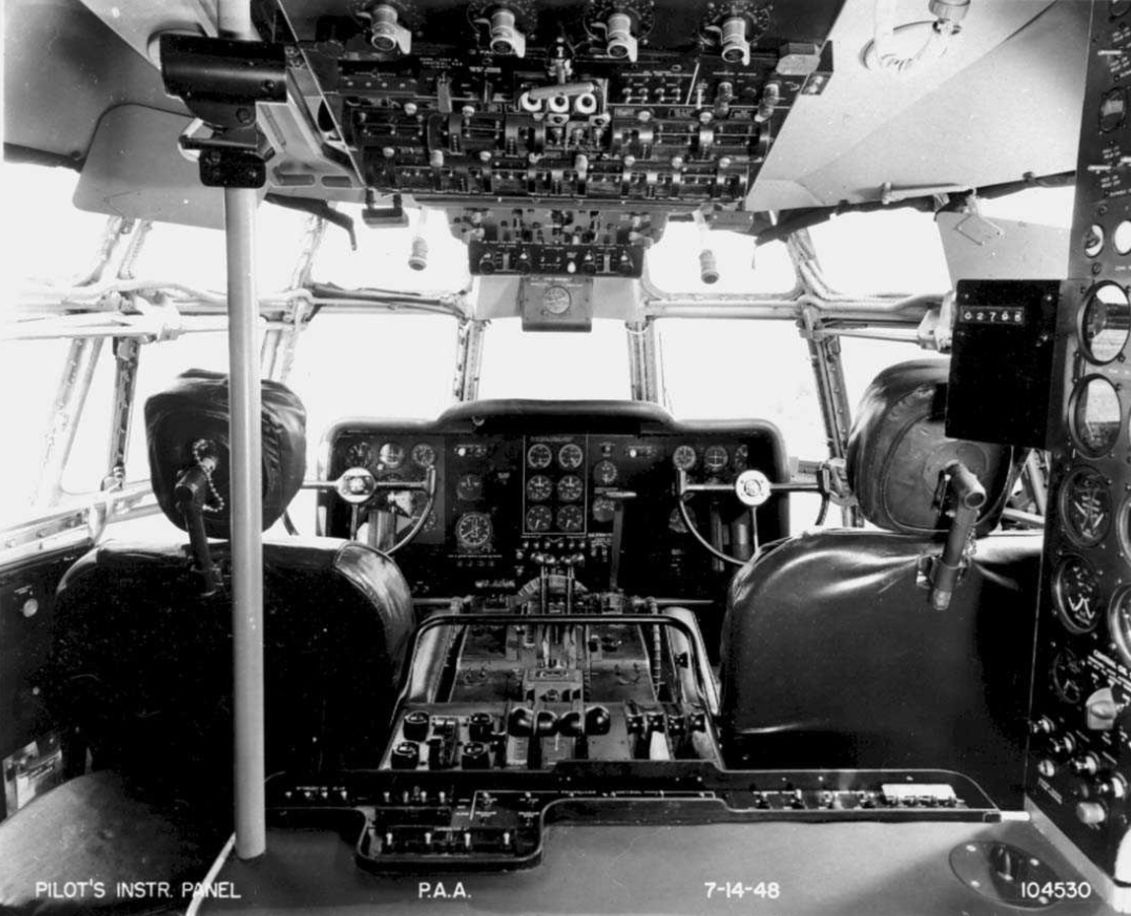
Below Pan Am interior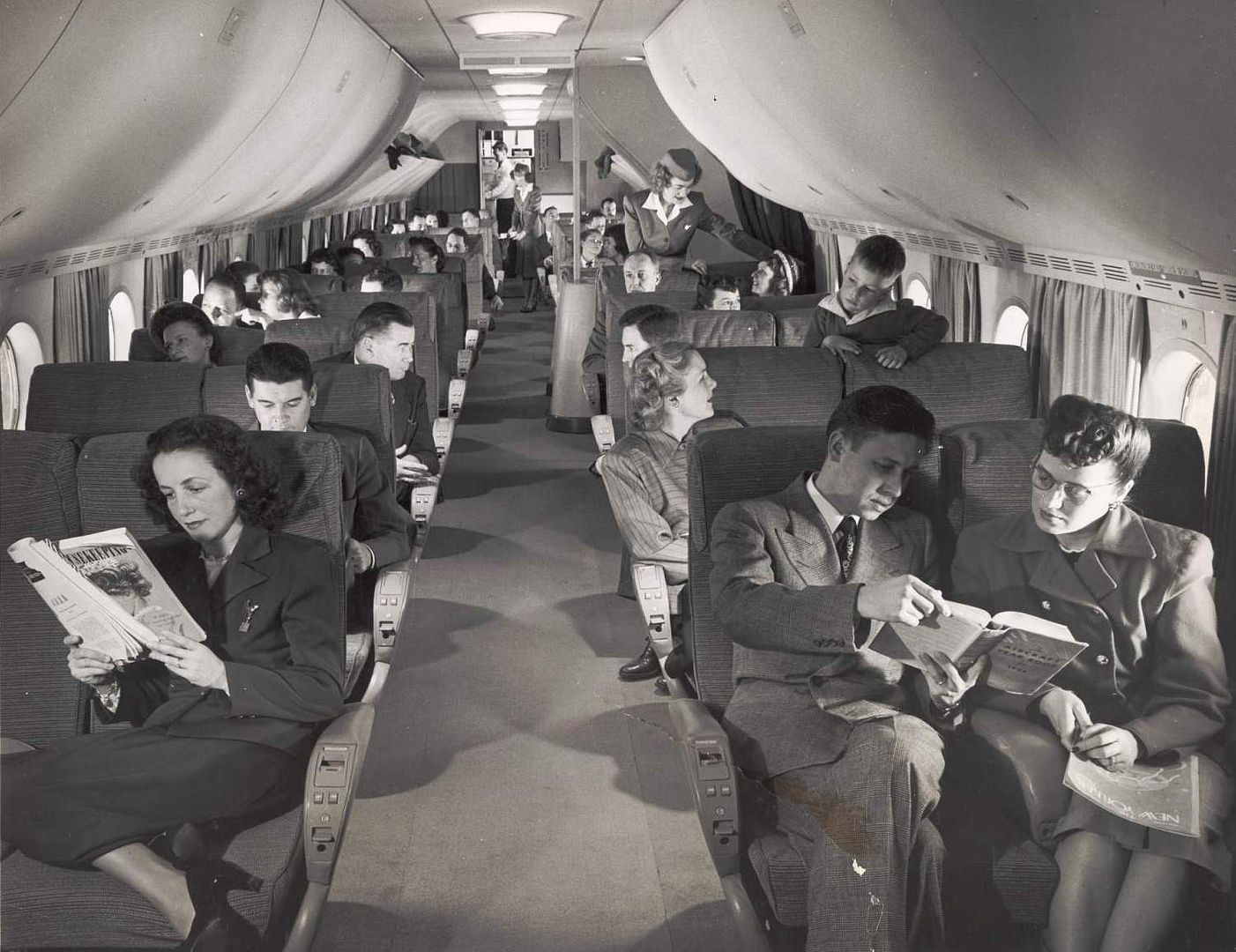
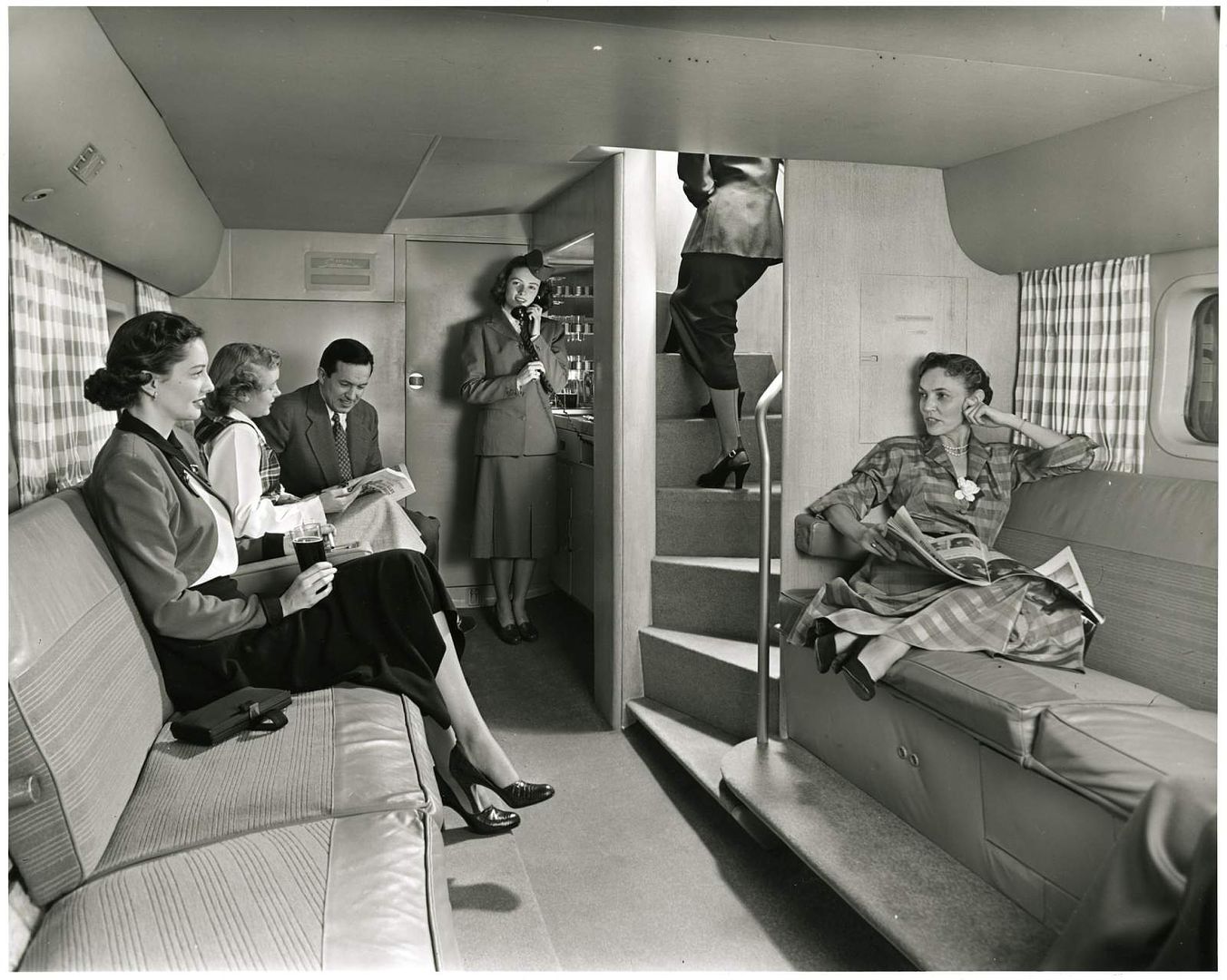
Below Pan Am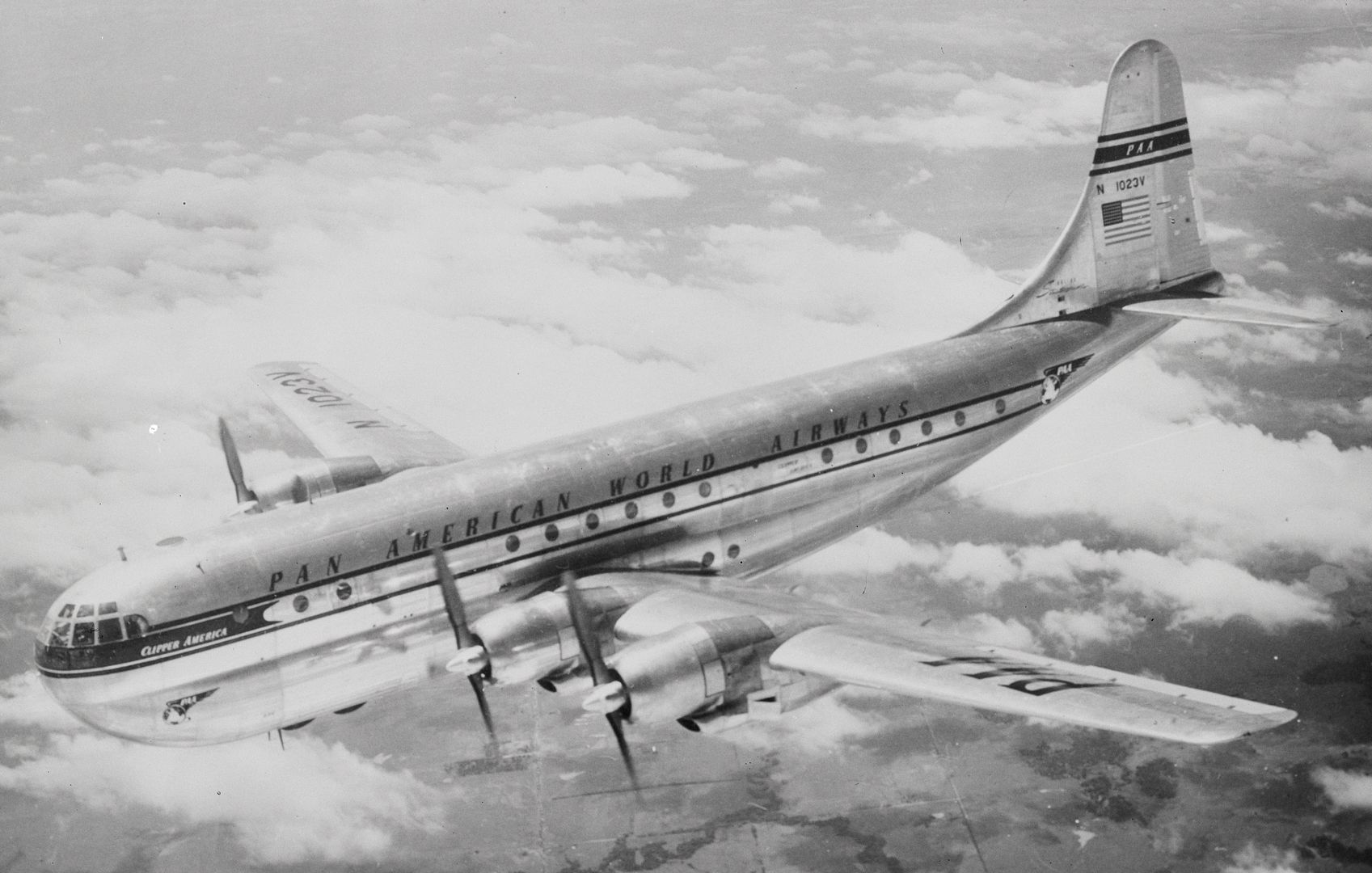
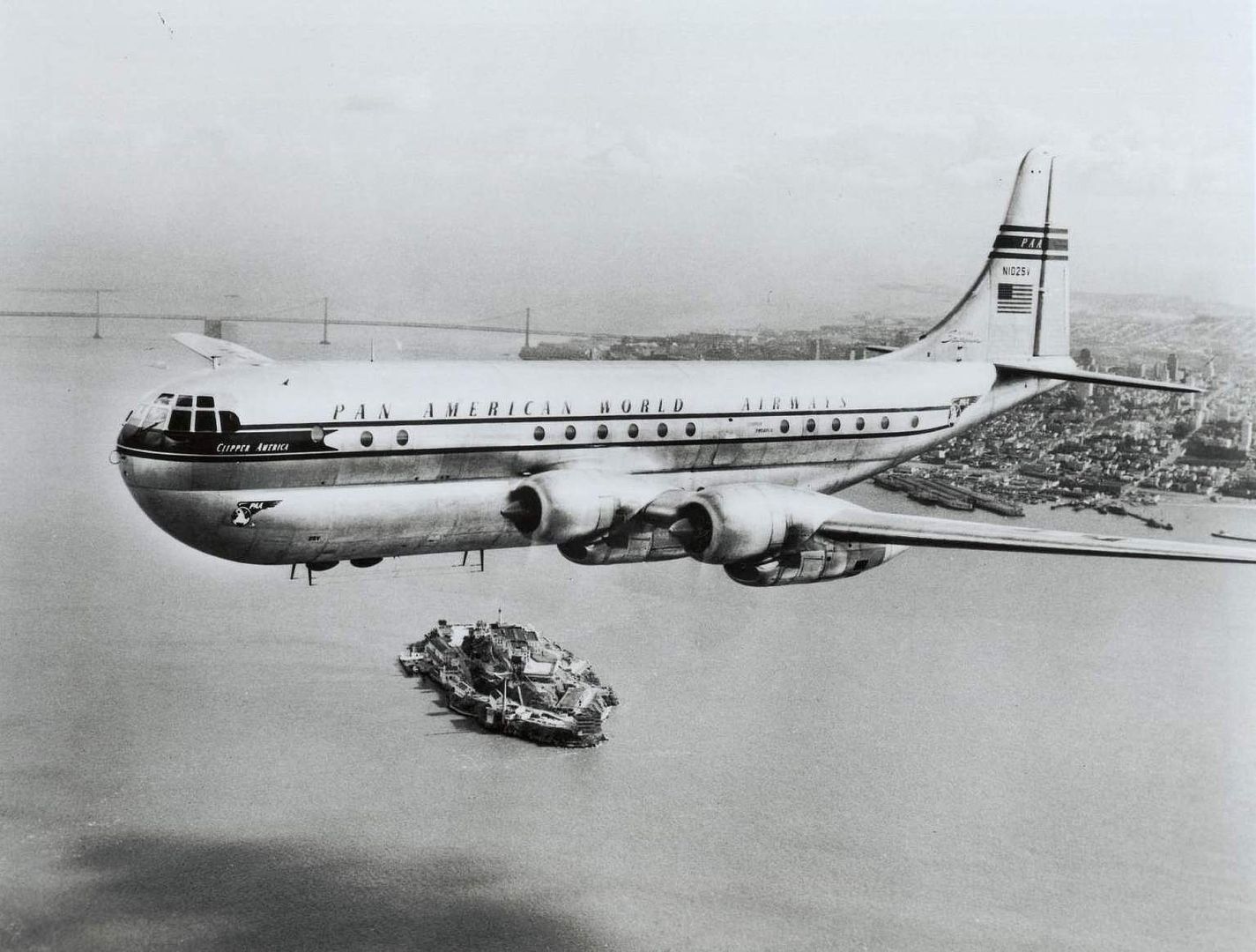
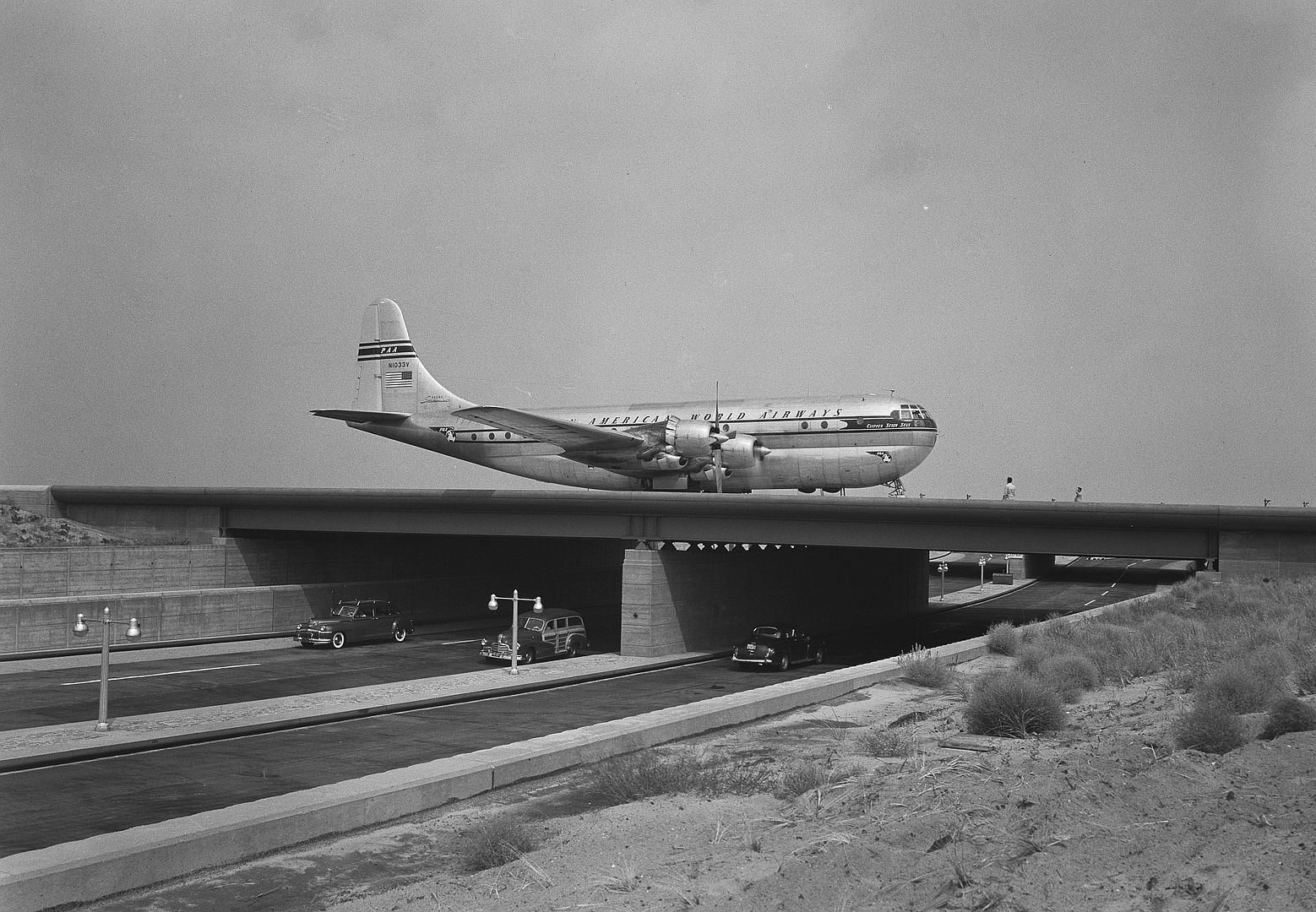
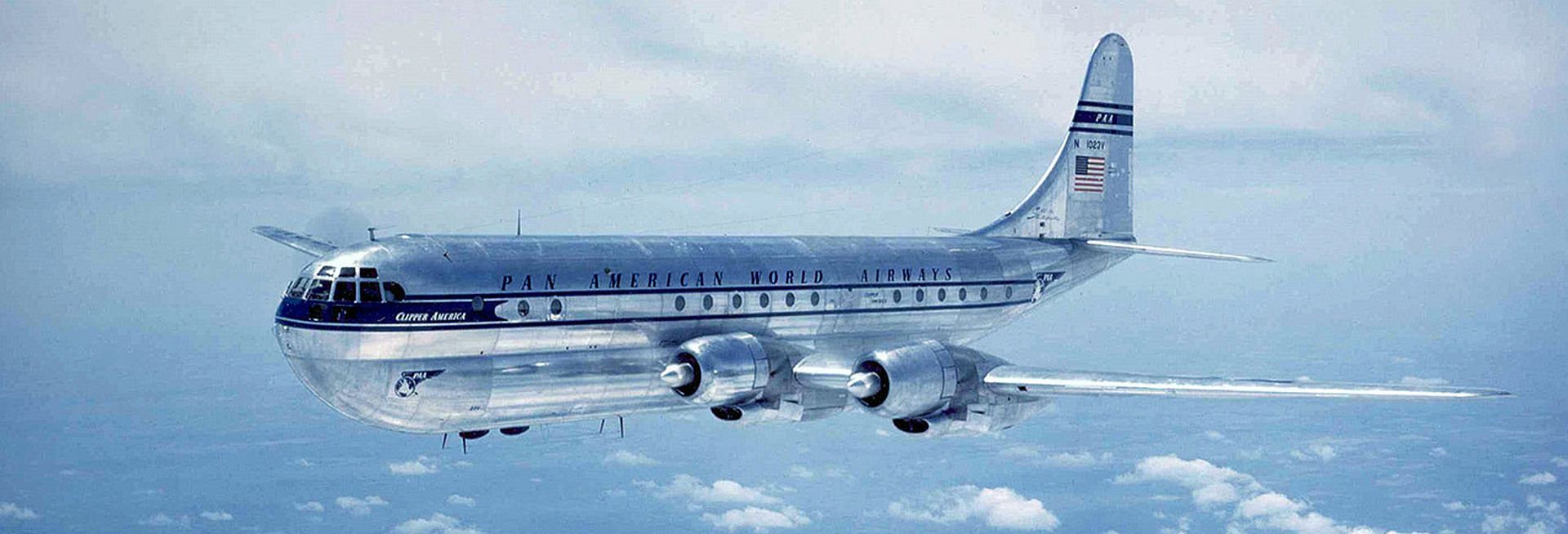
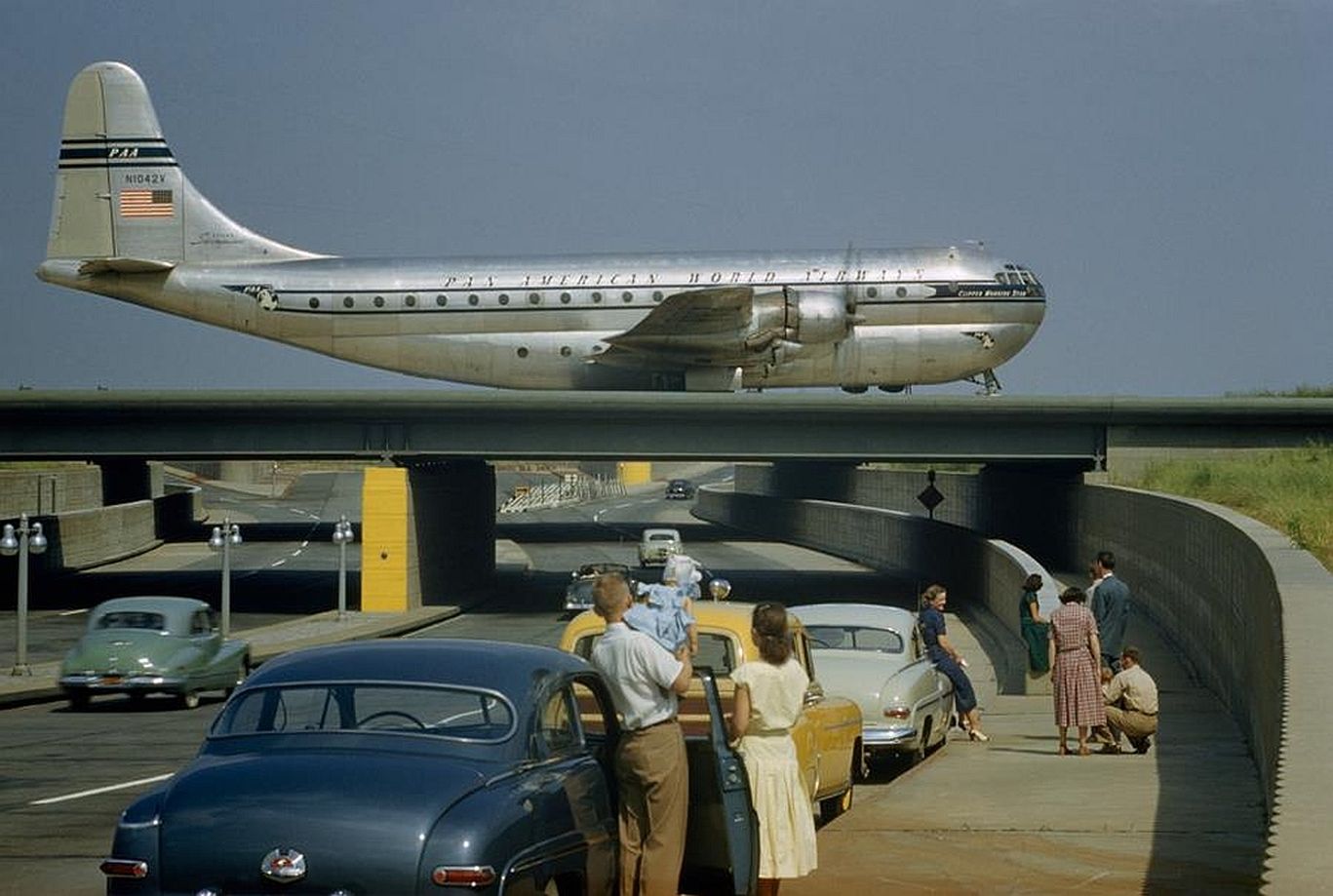
Below Northwest
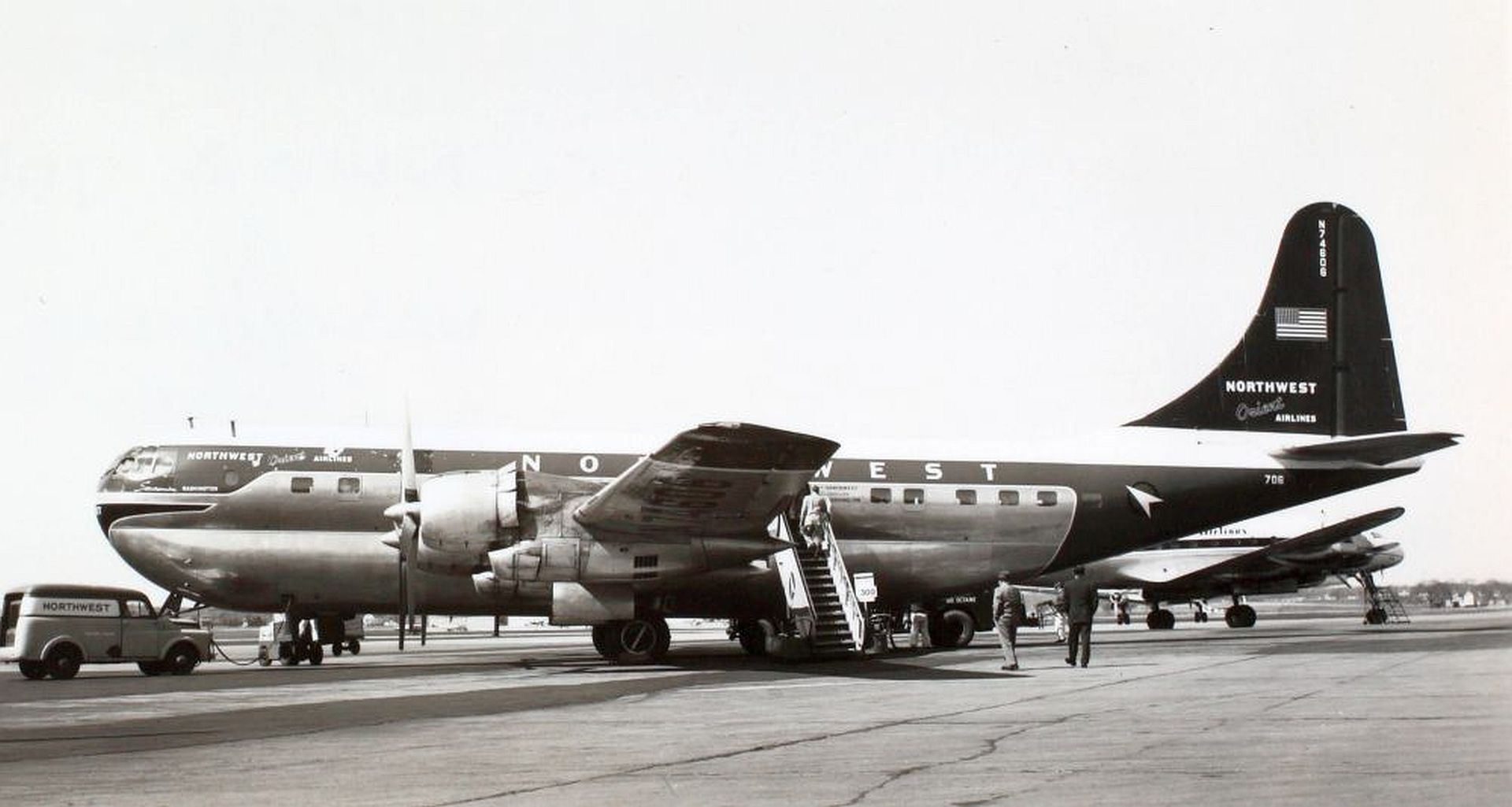
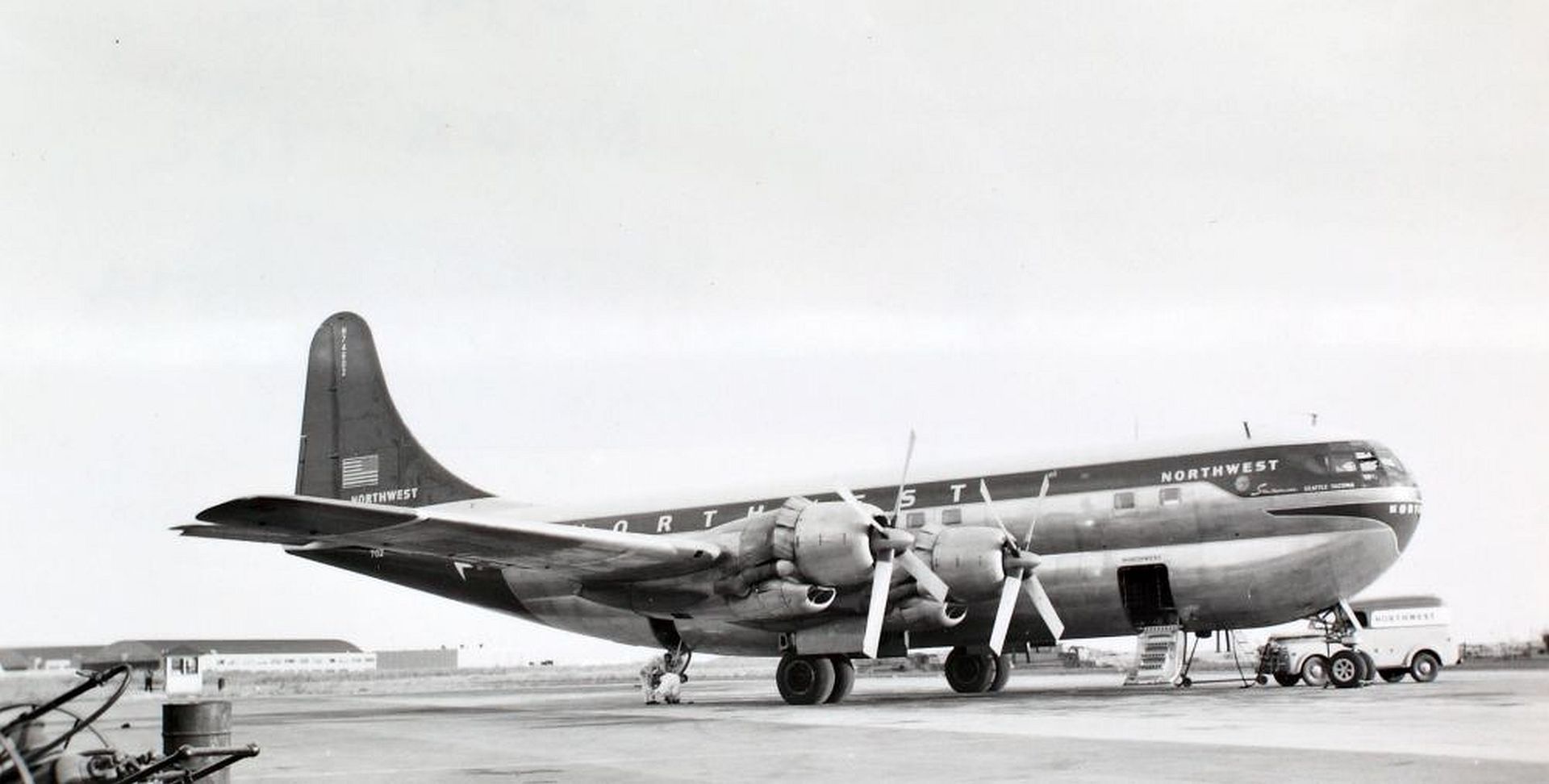
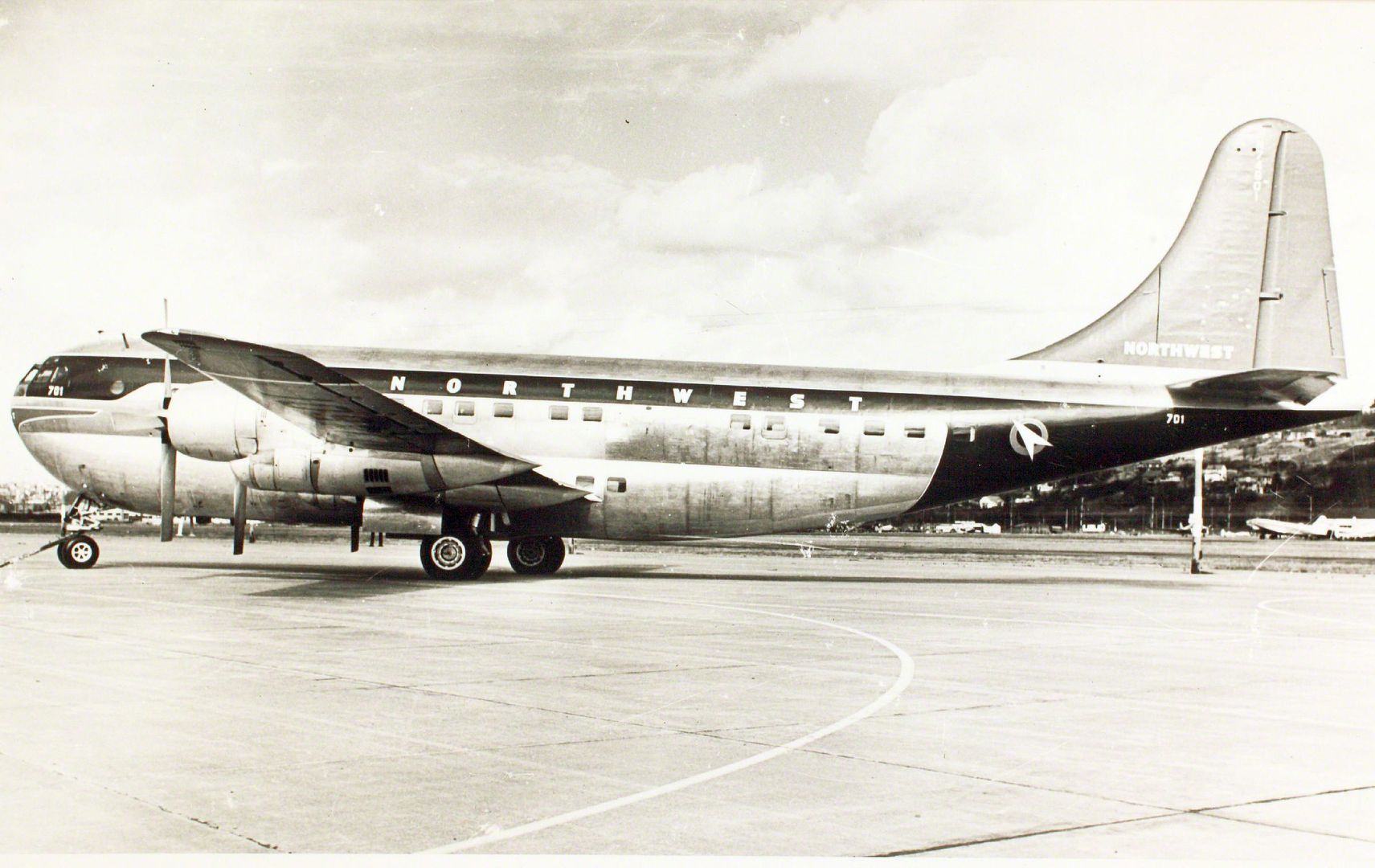
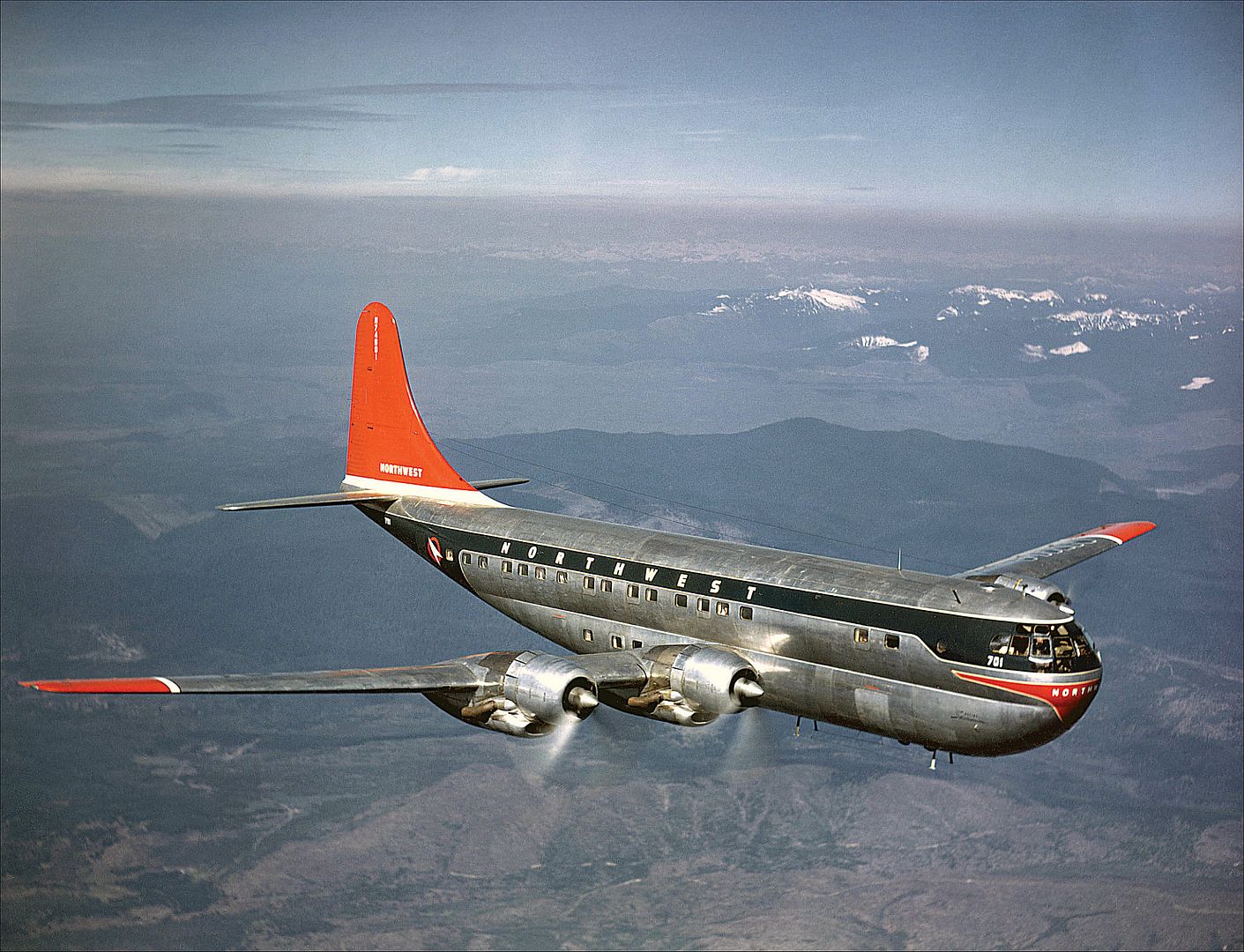
Below BOAC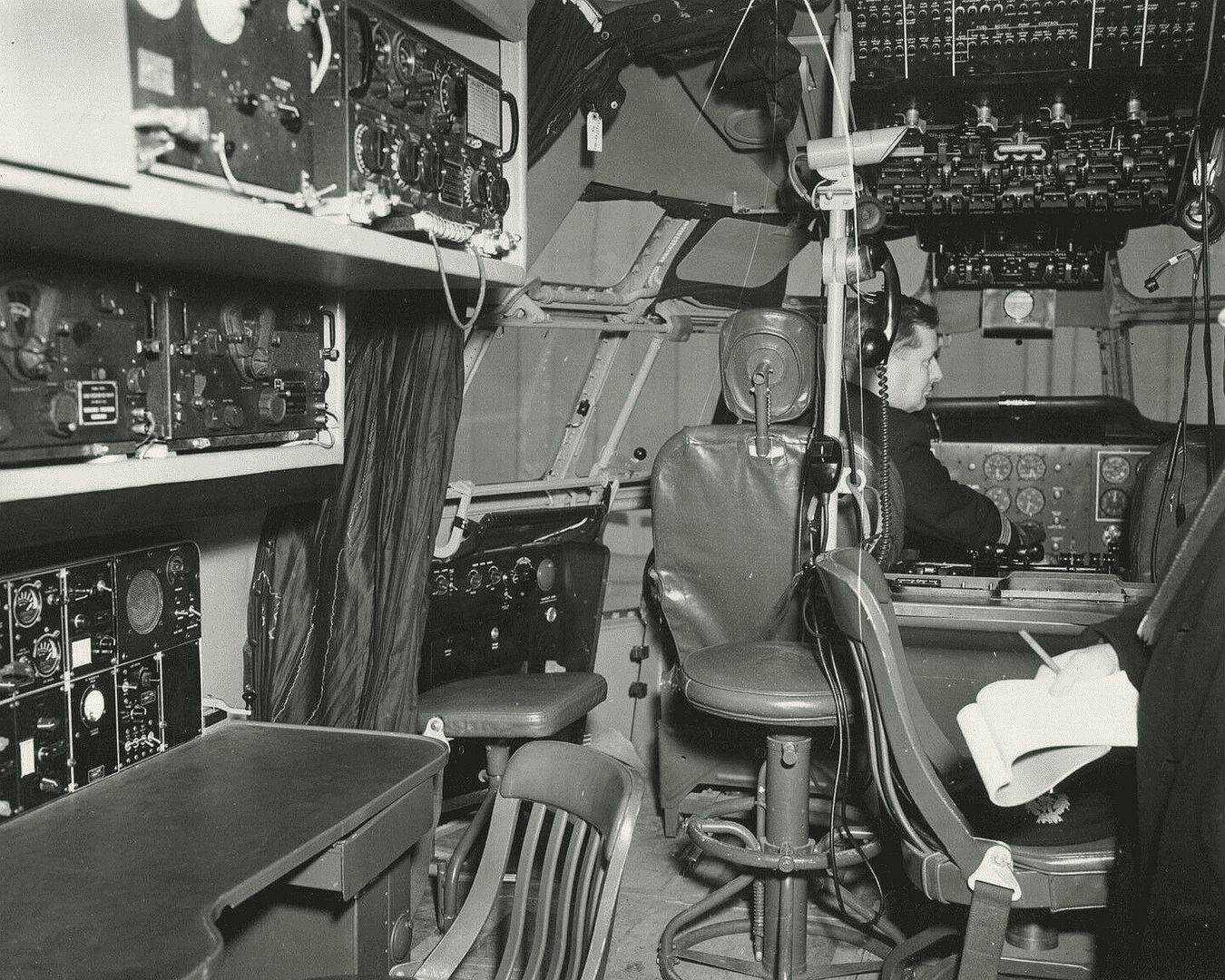
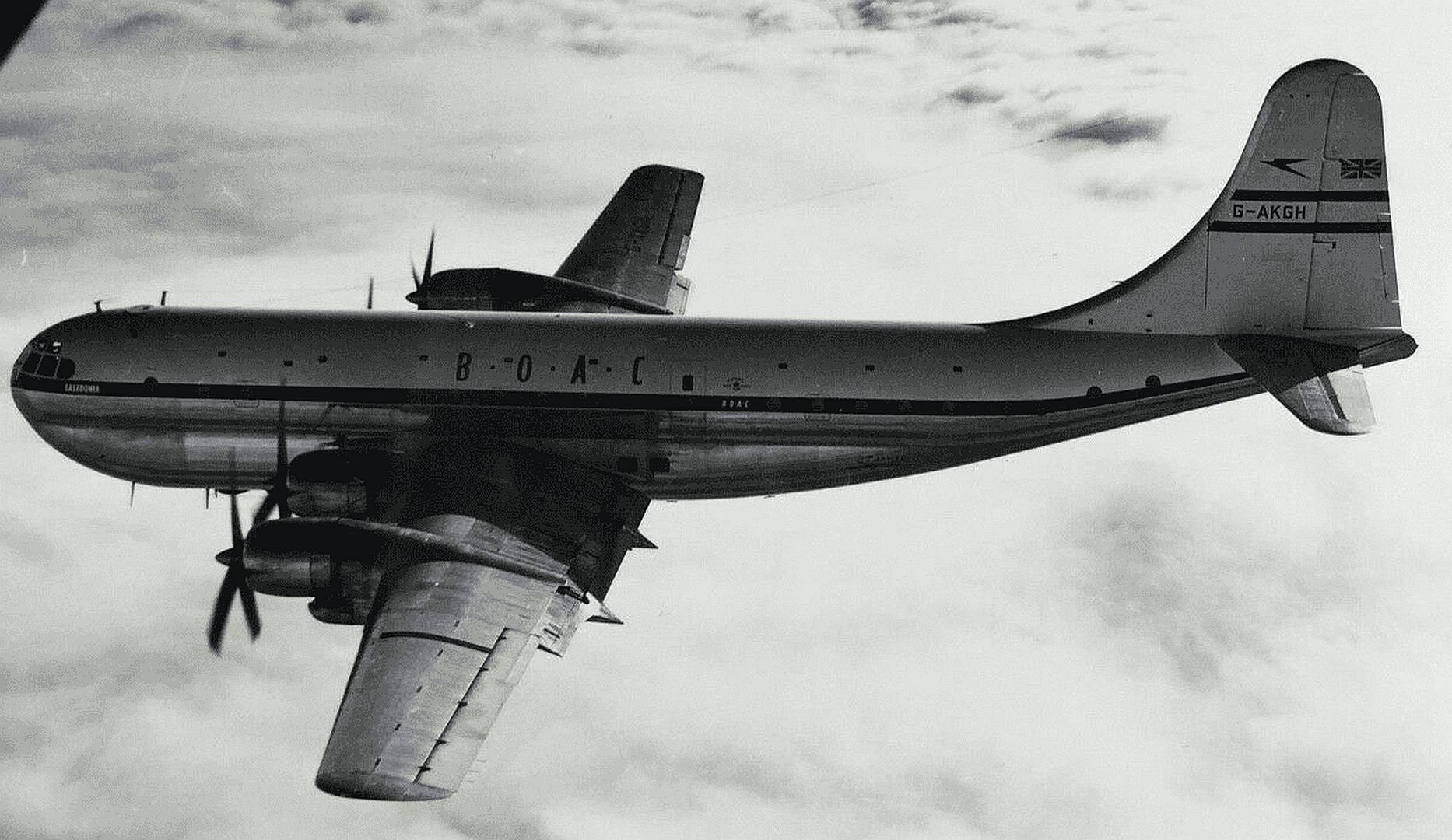
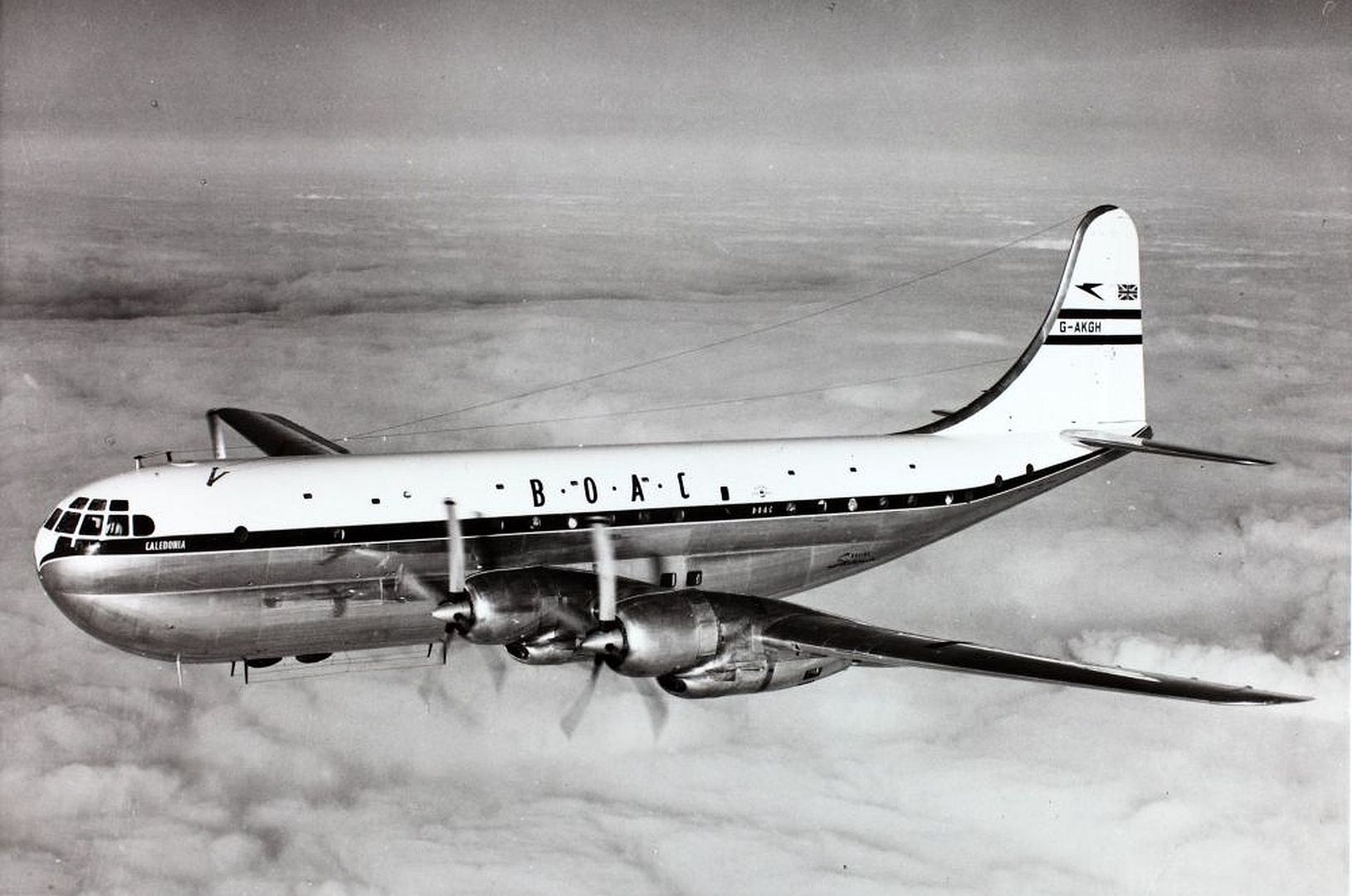
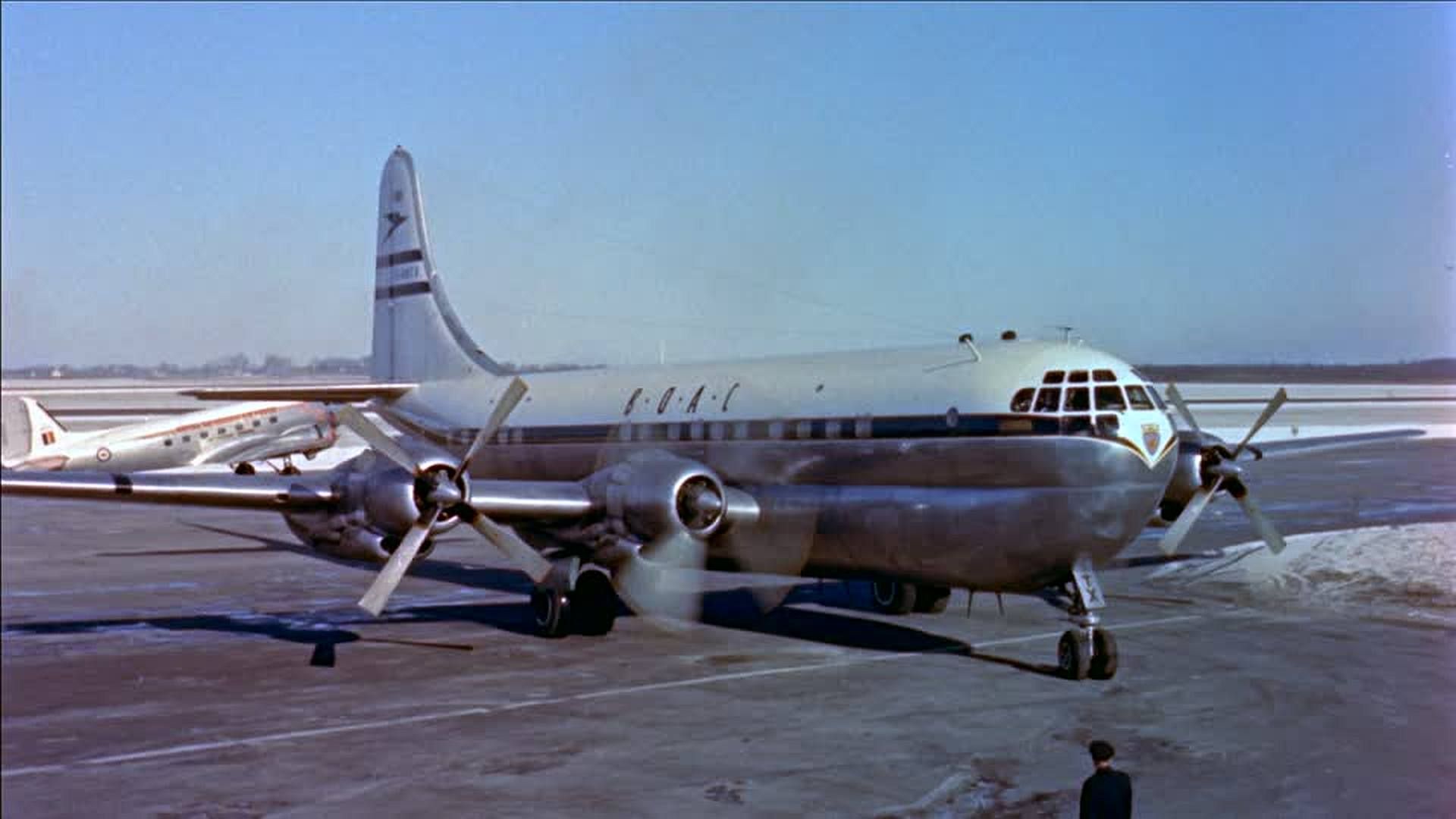
Below West African Airways Corporation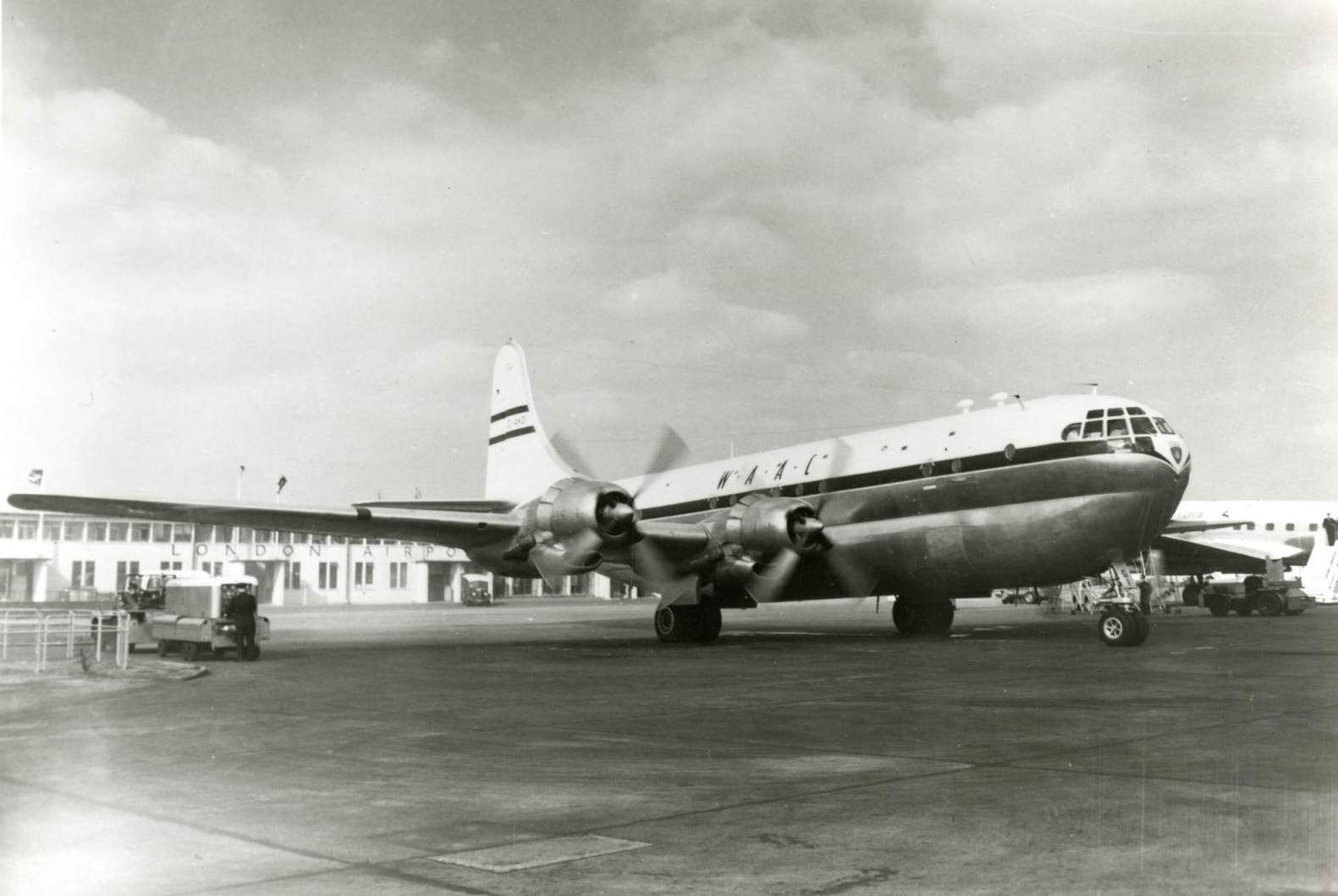
Below AOA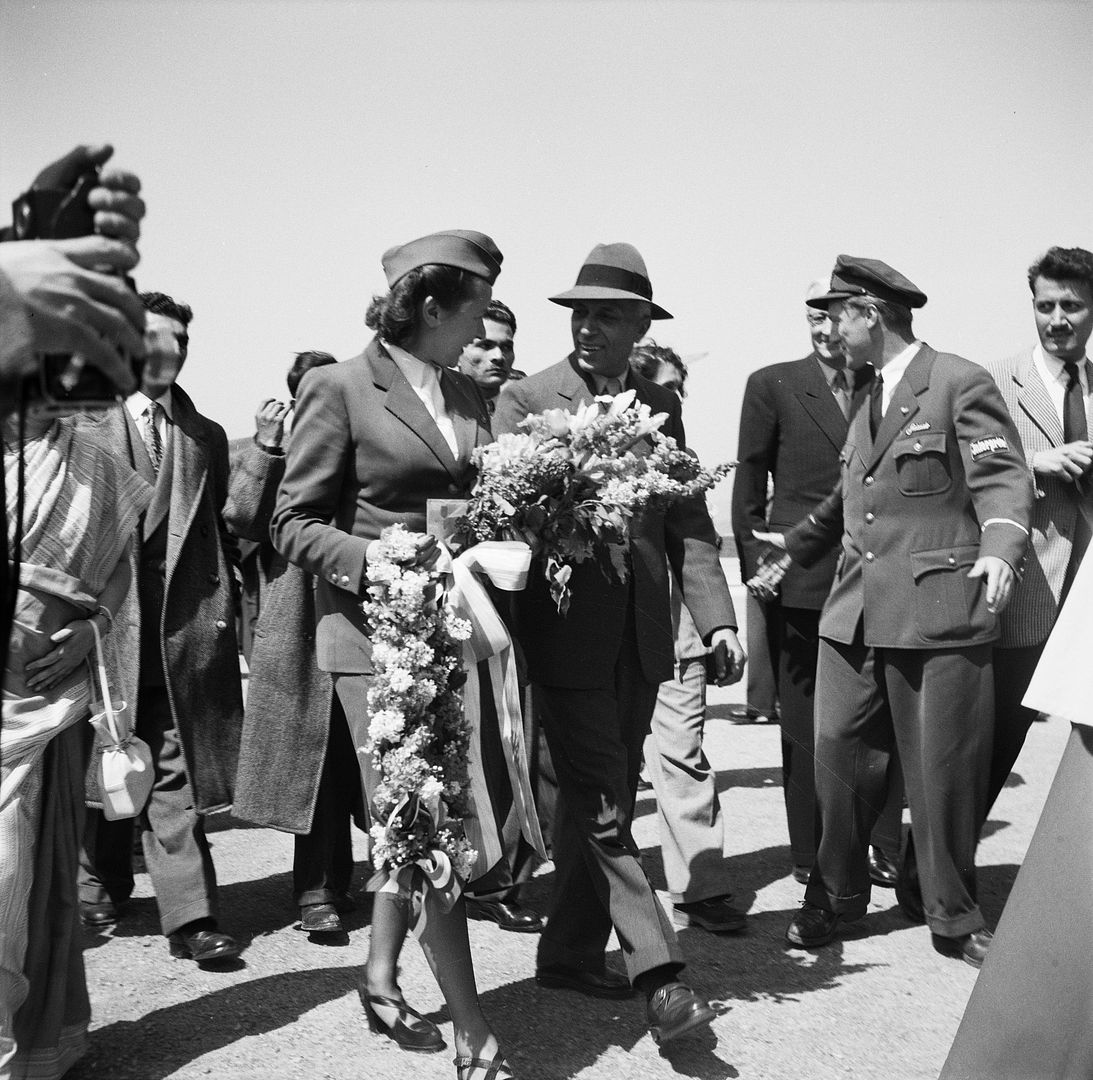
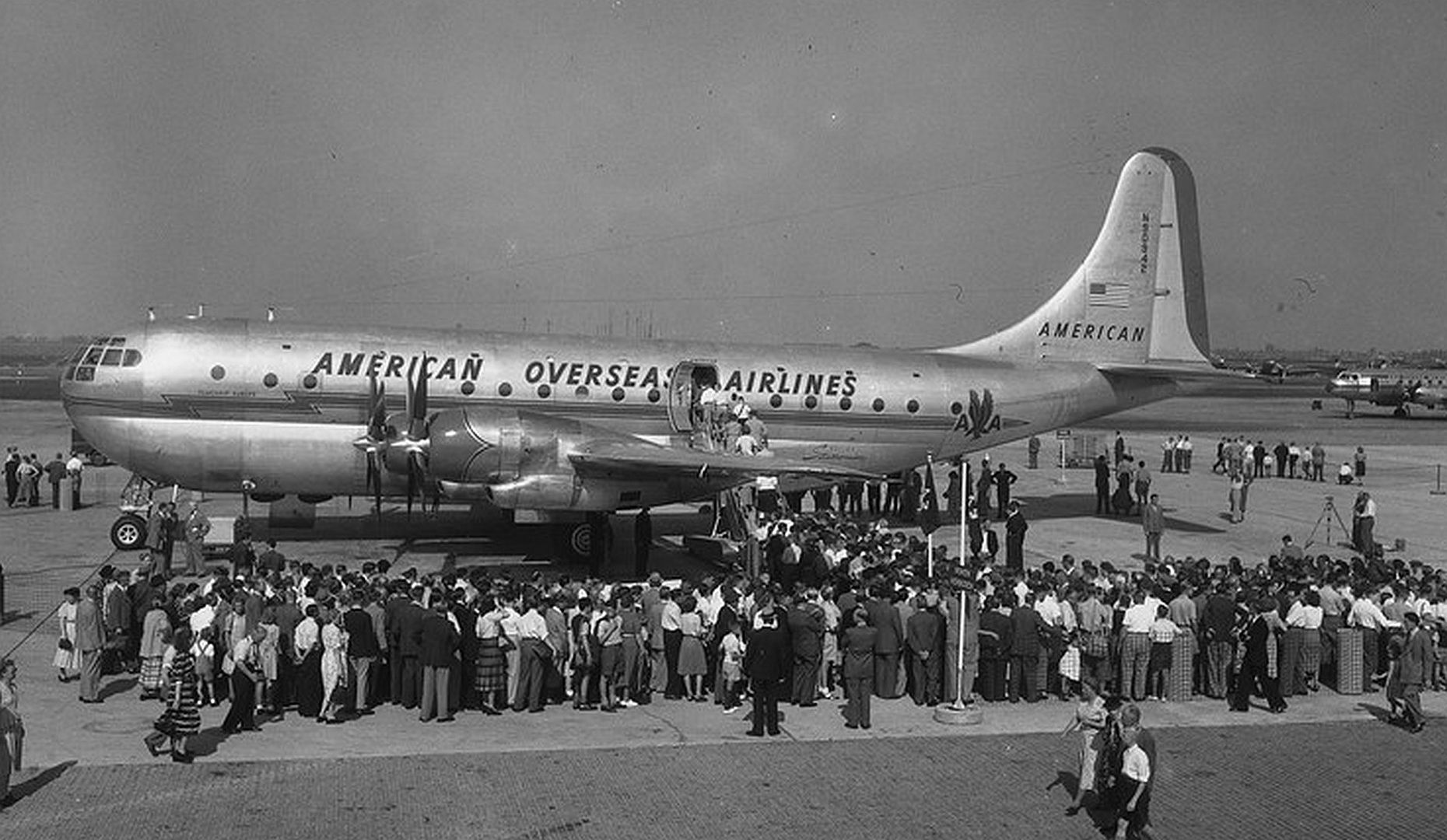


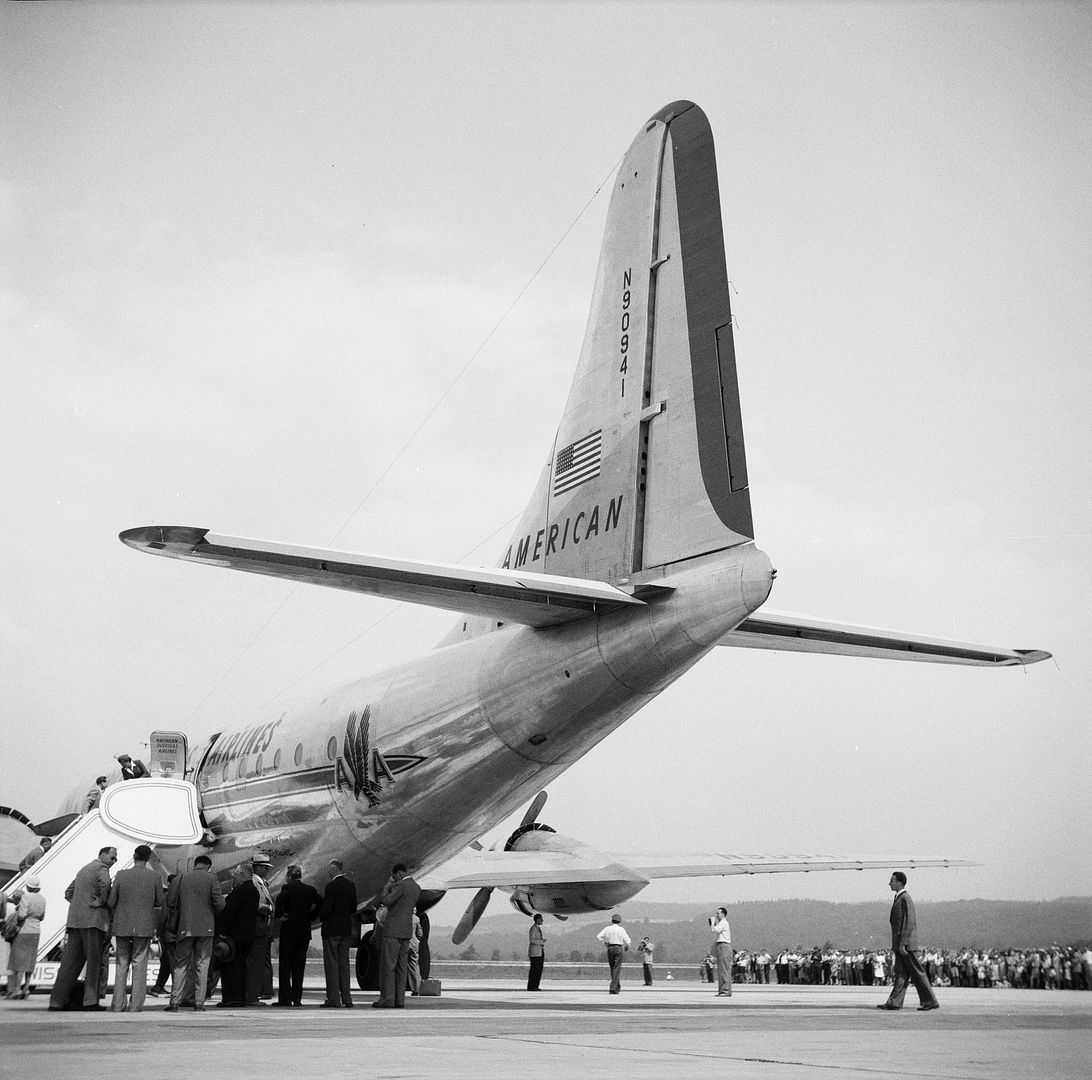
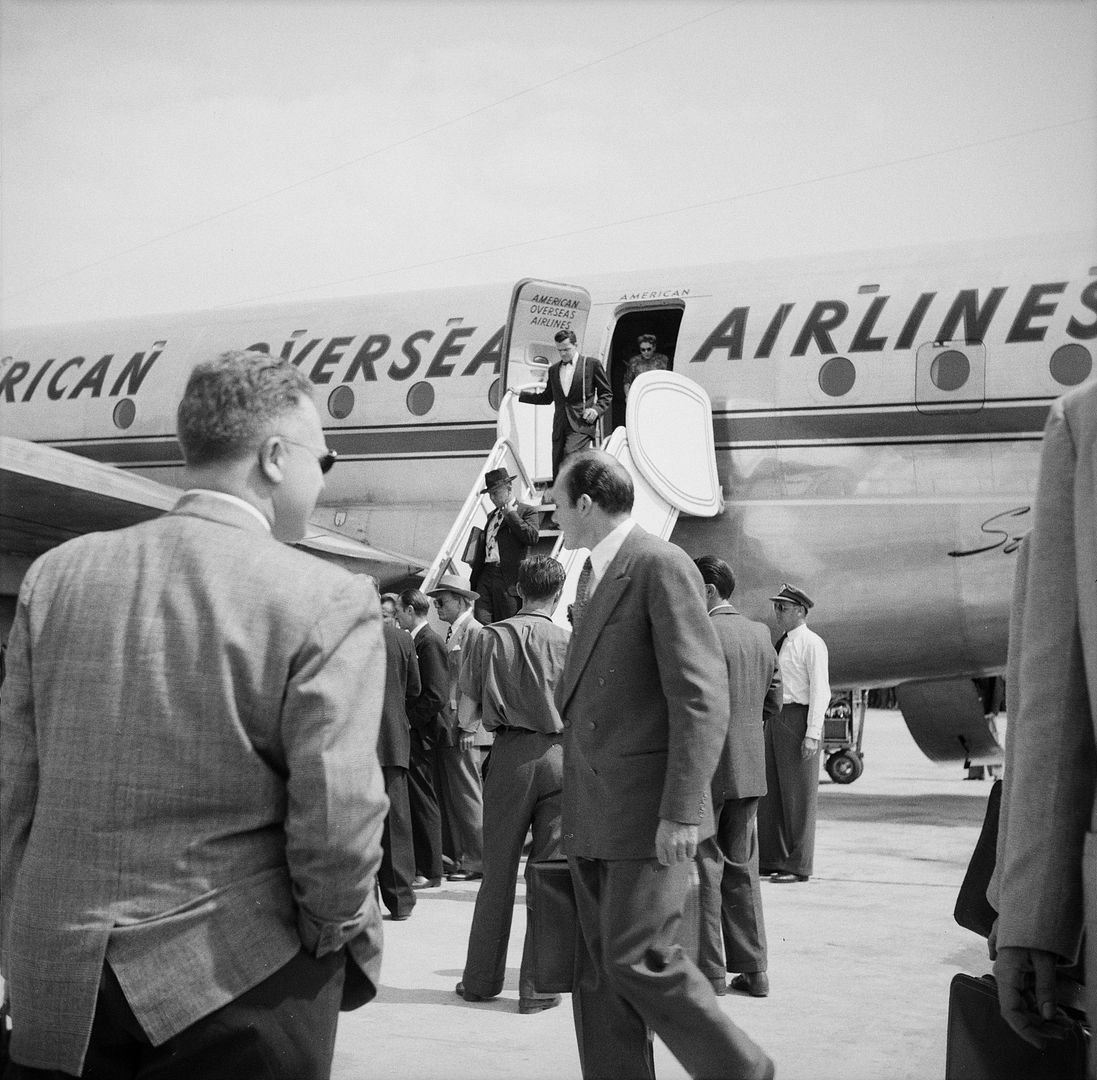
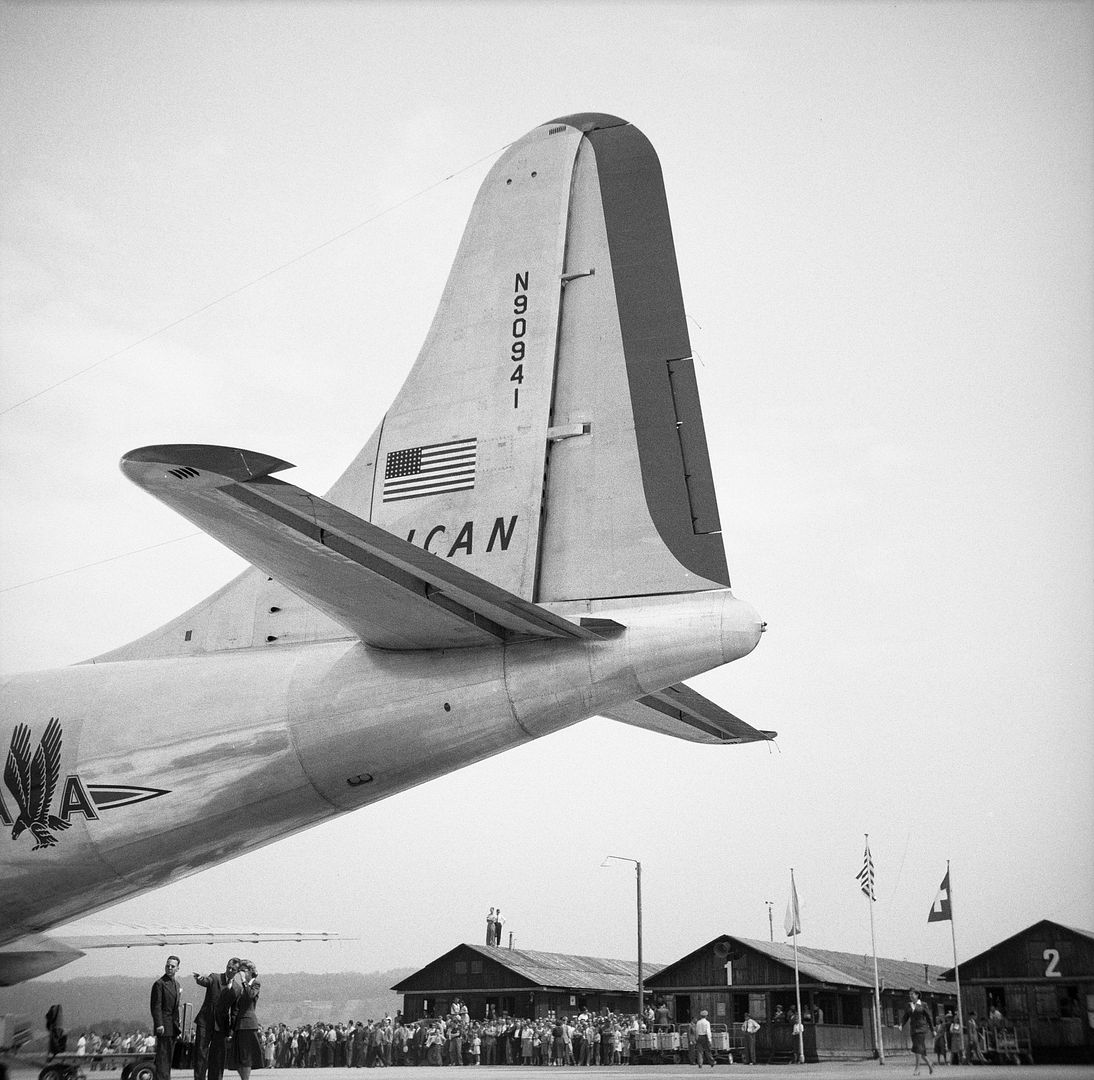

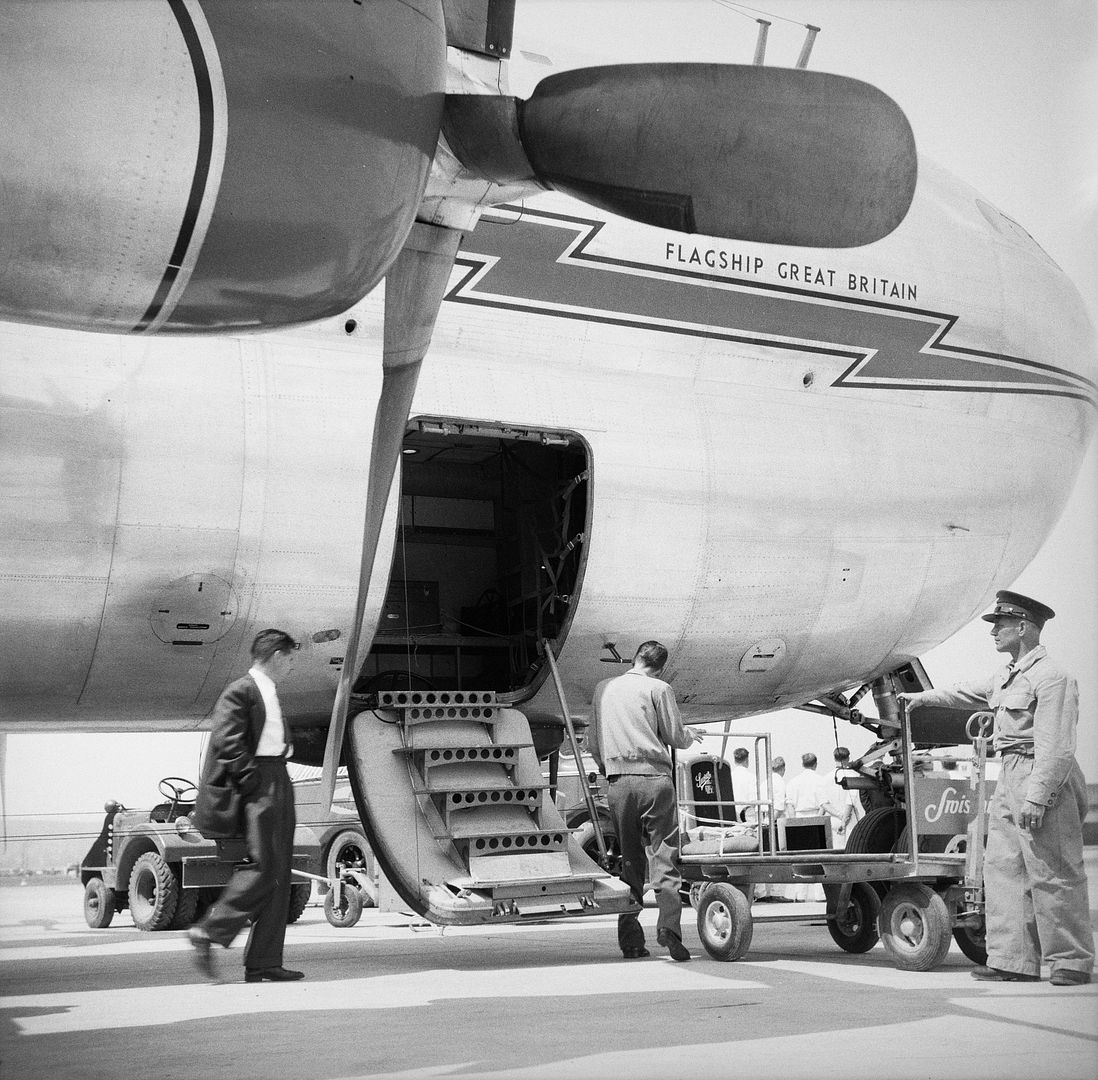
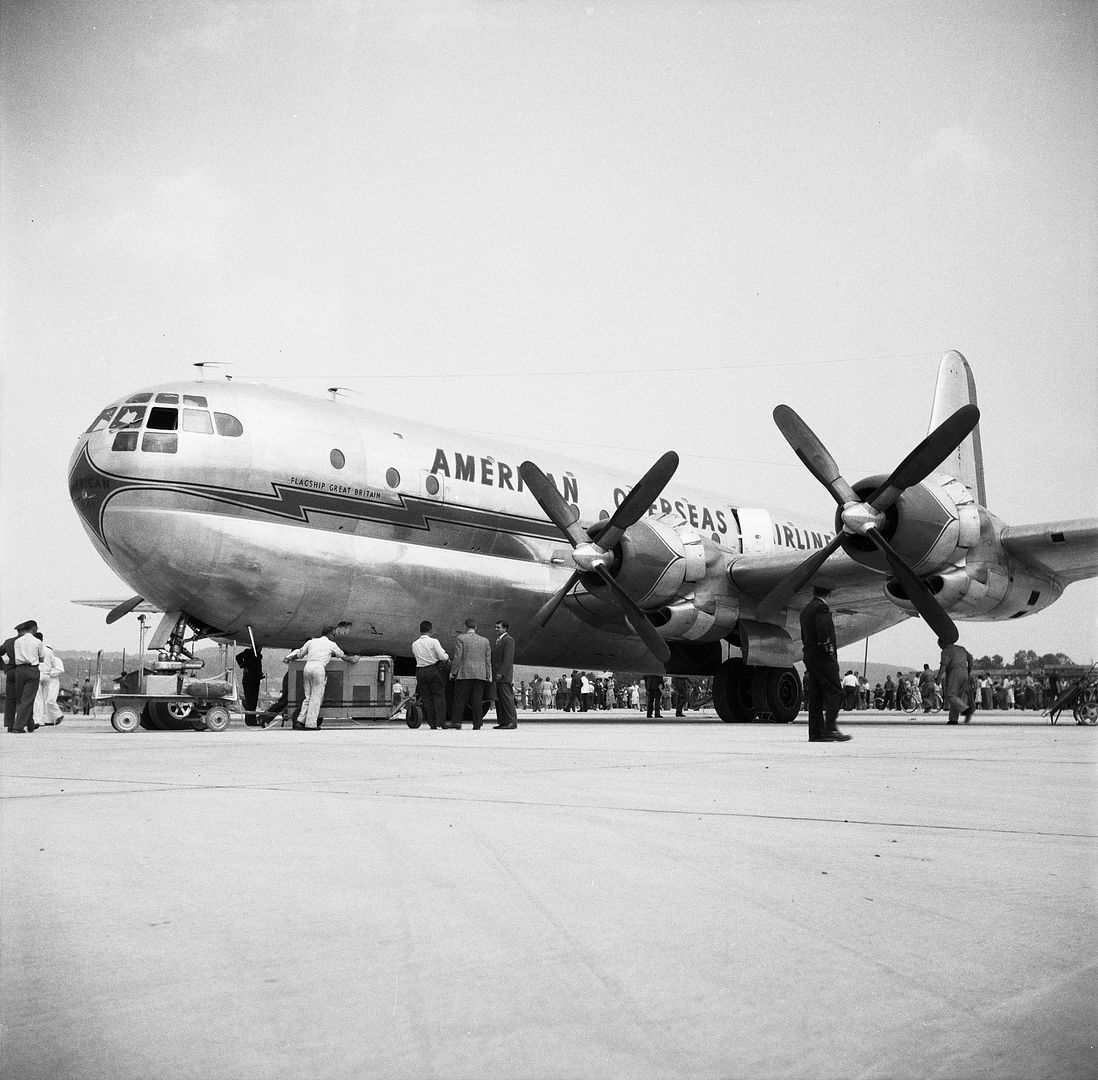
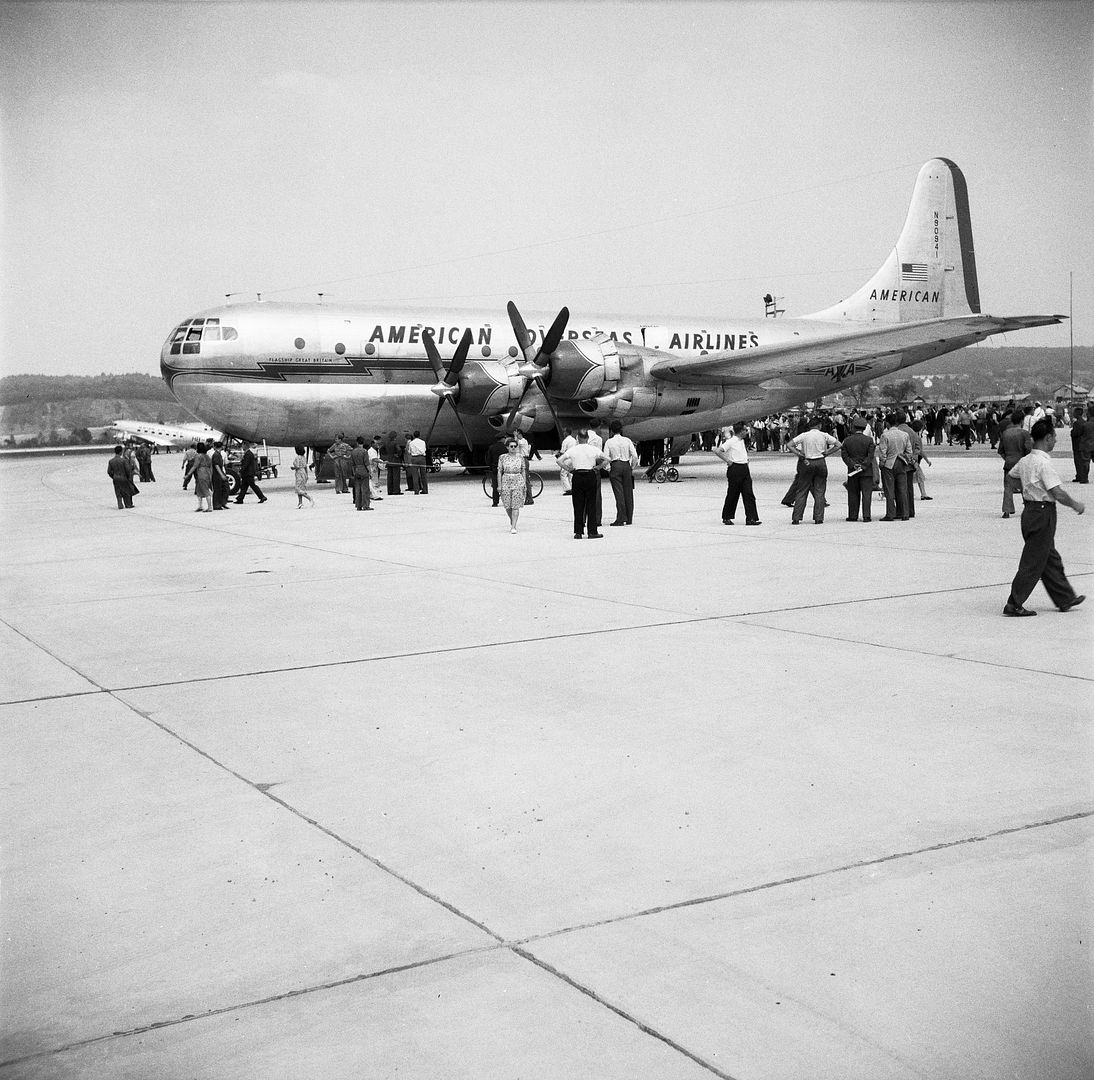
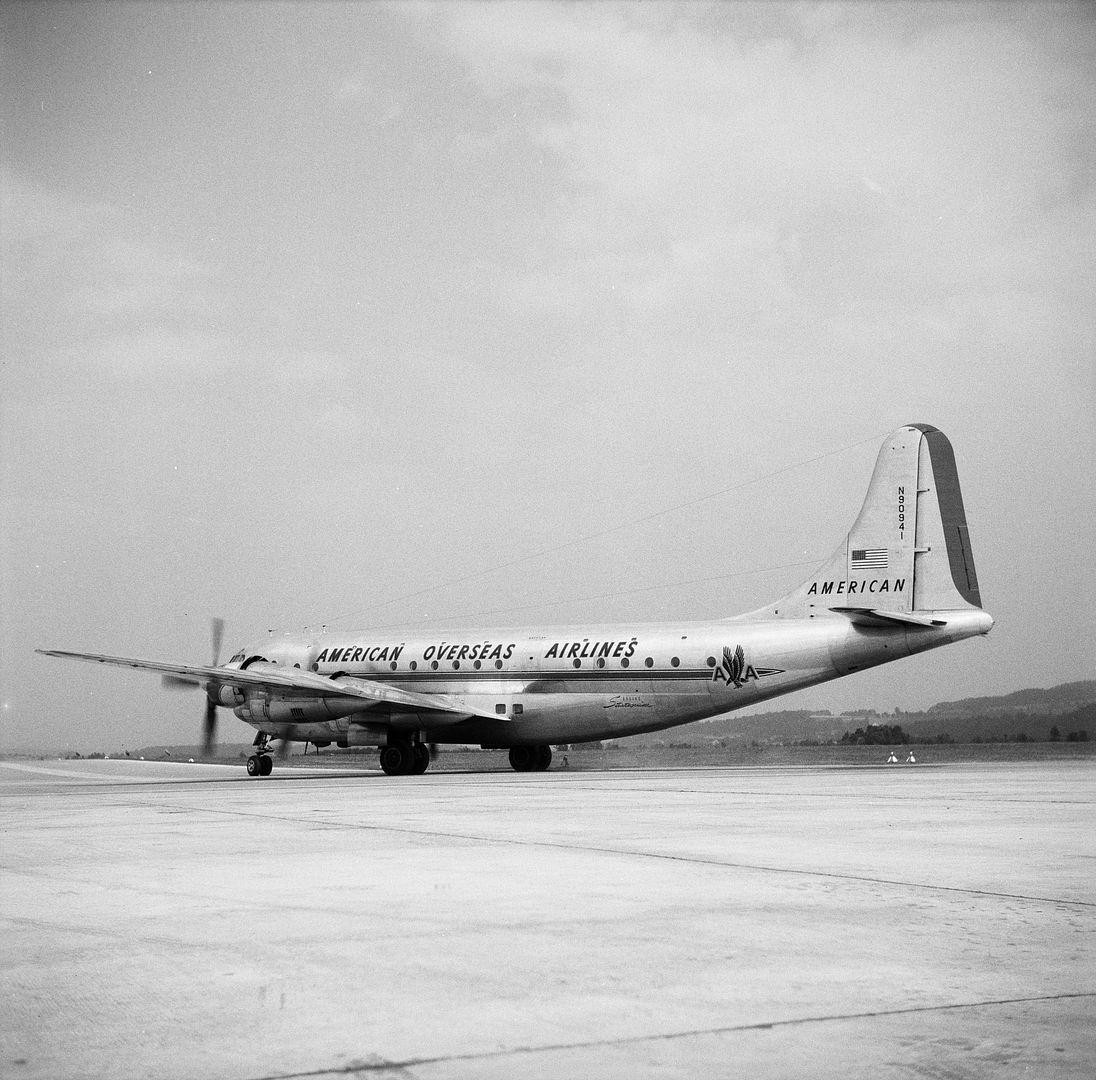
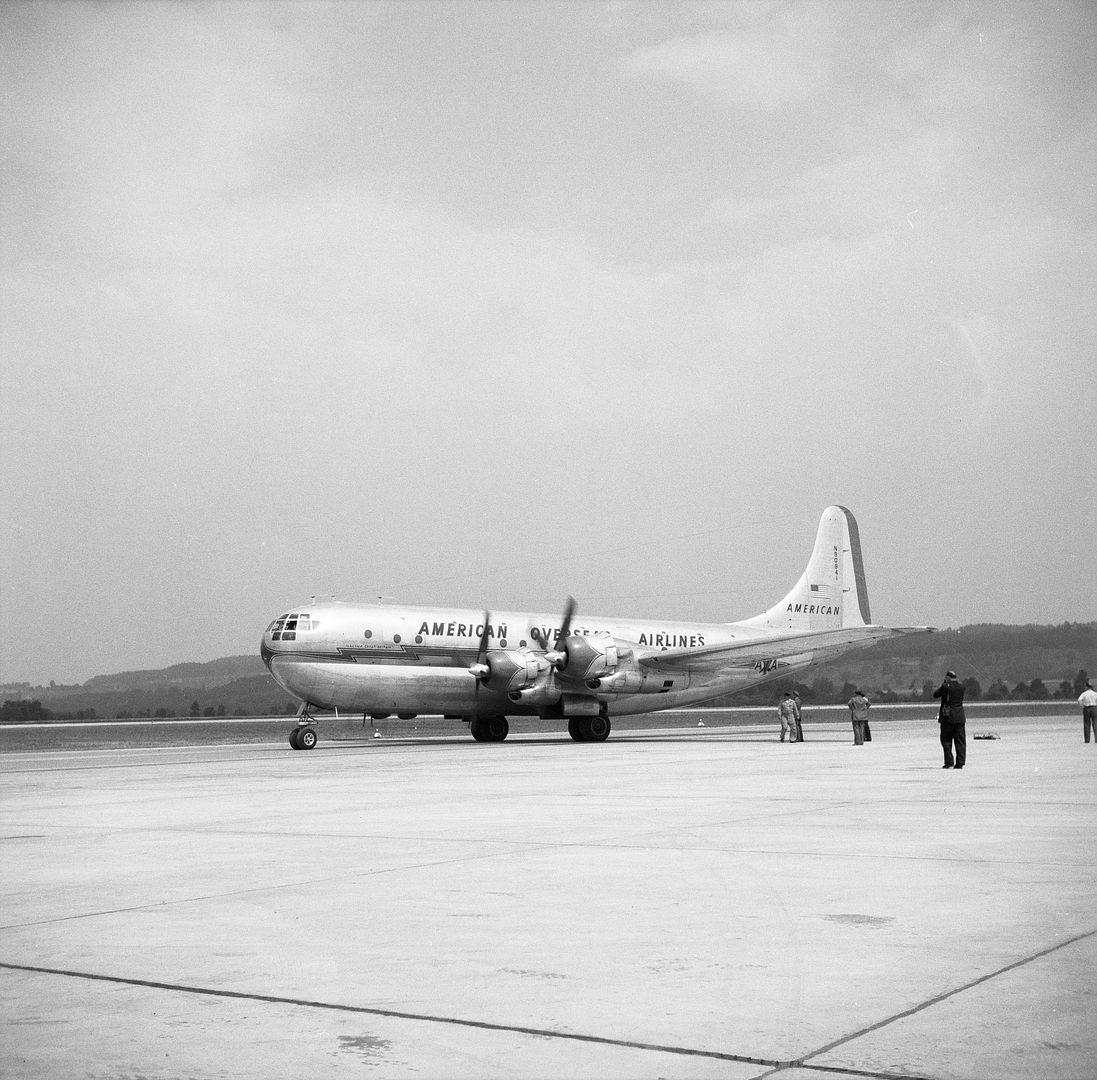
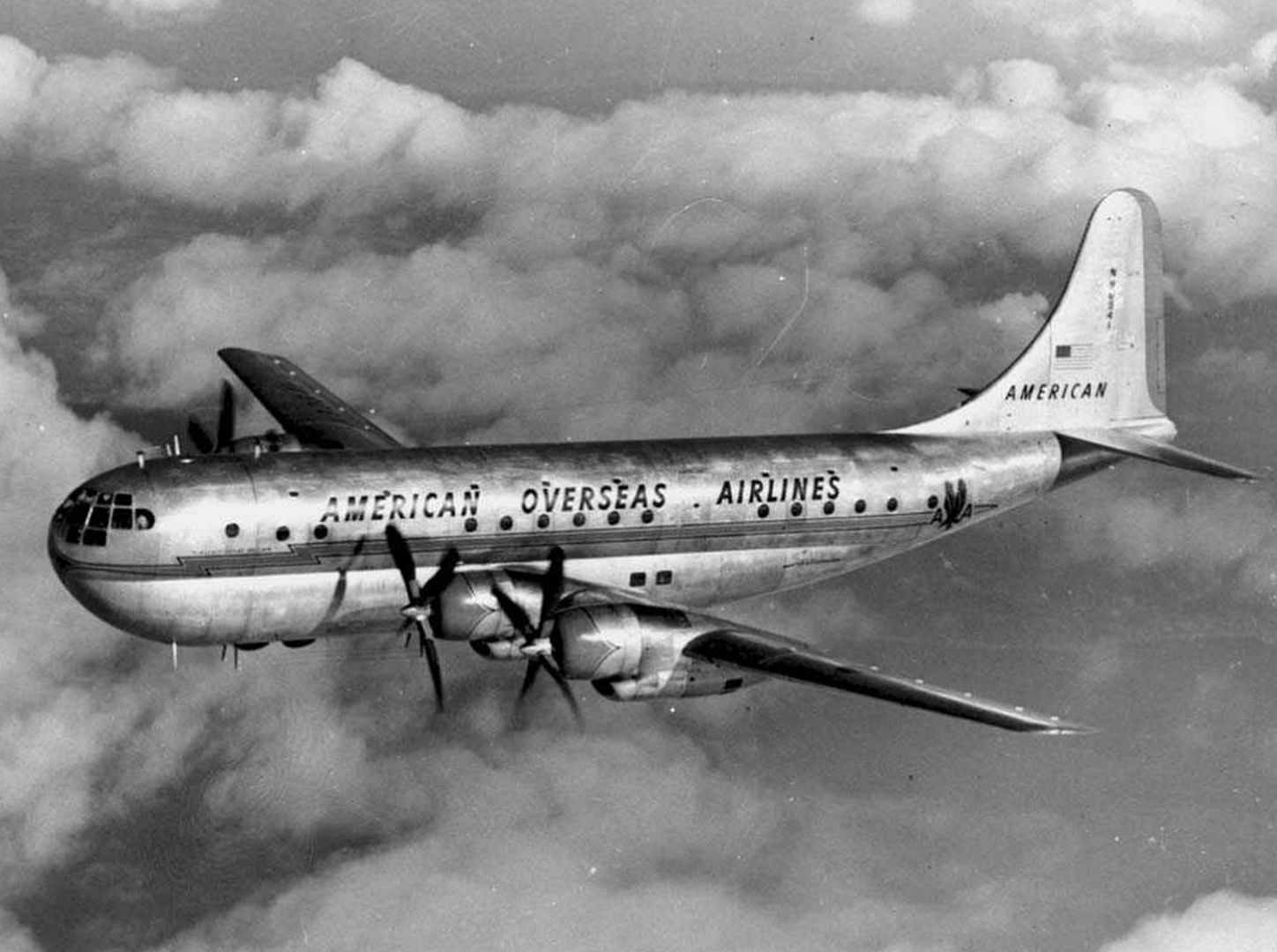
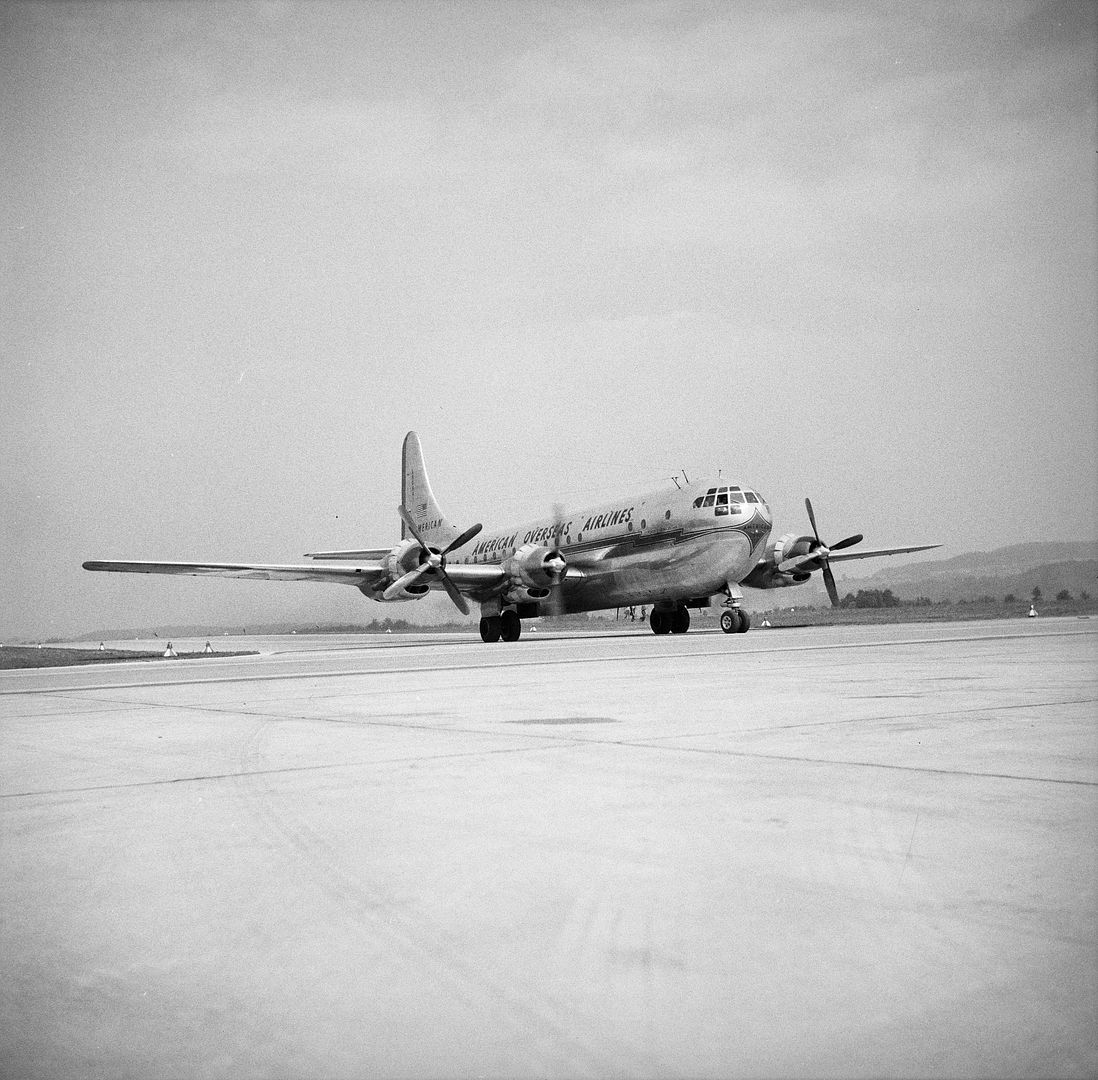
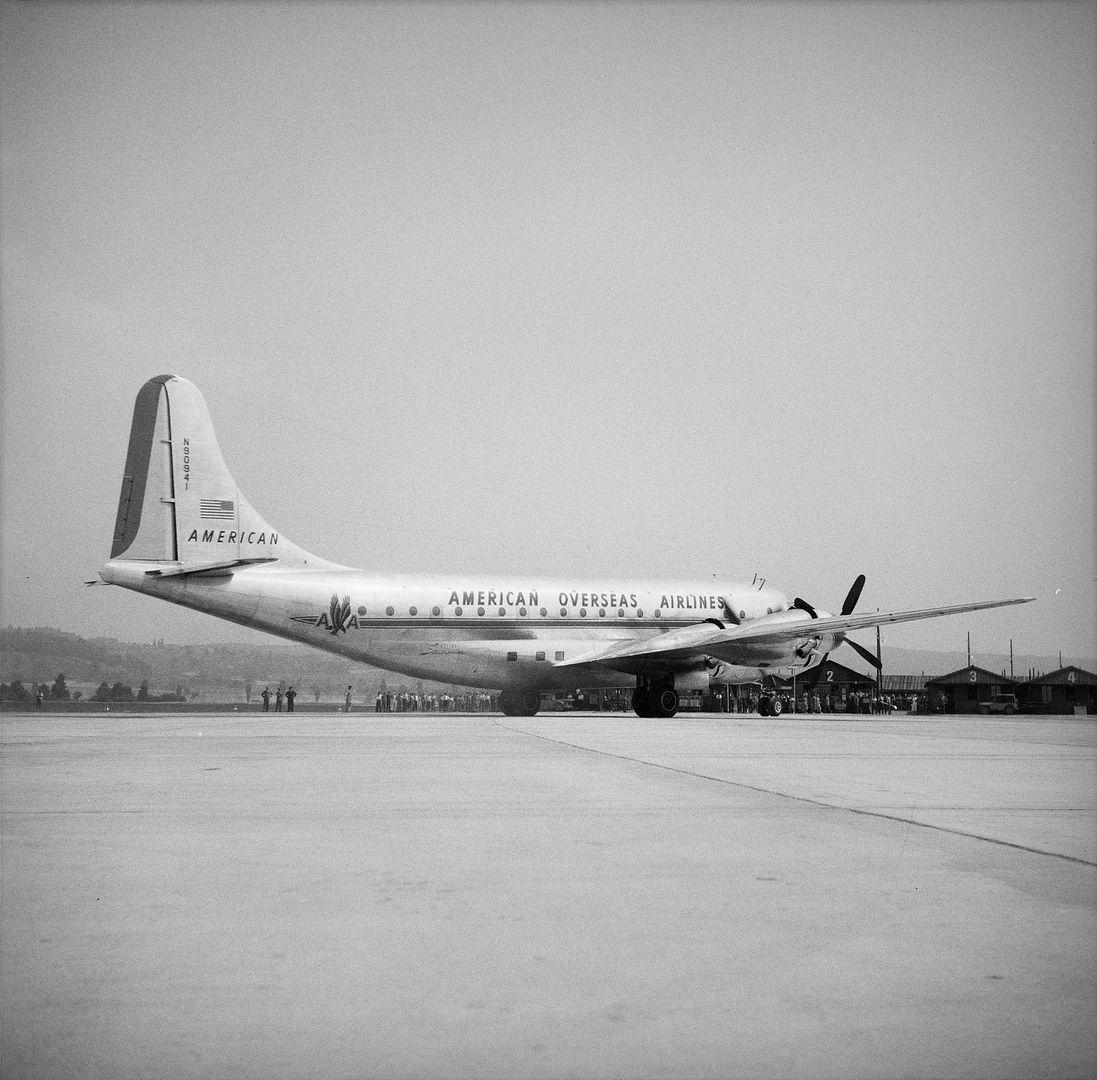
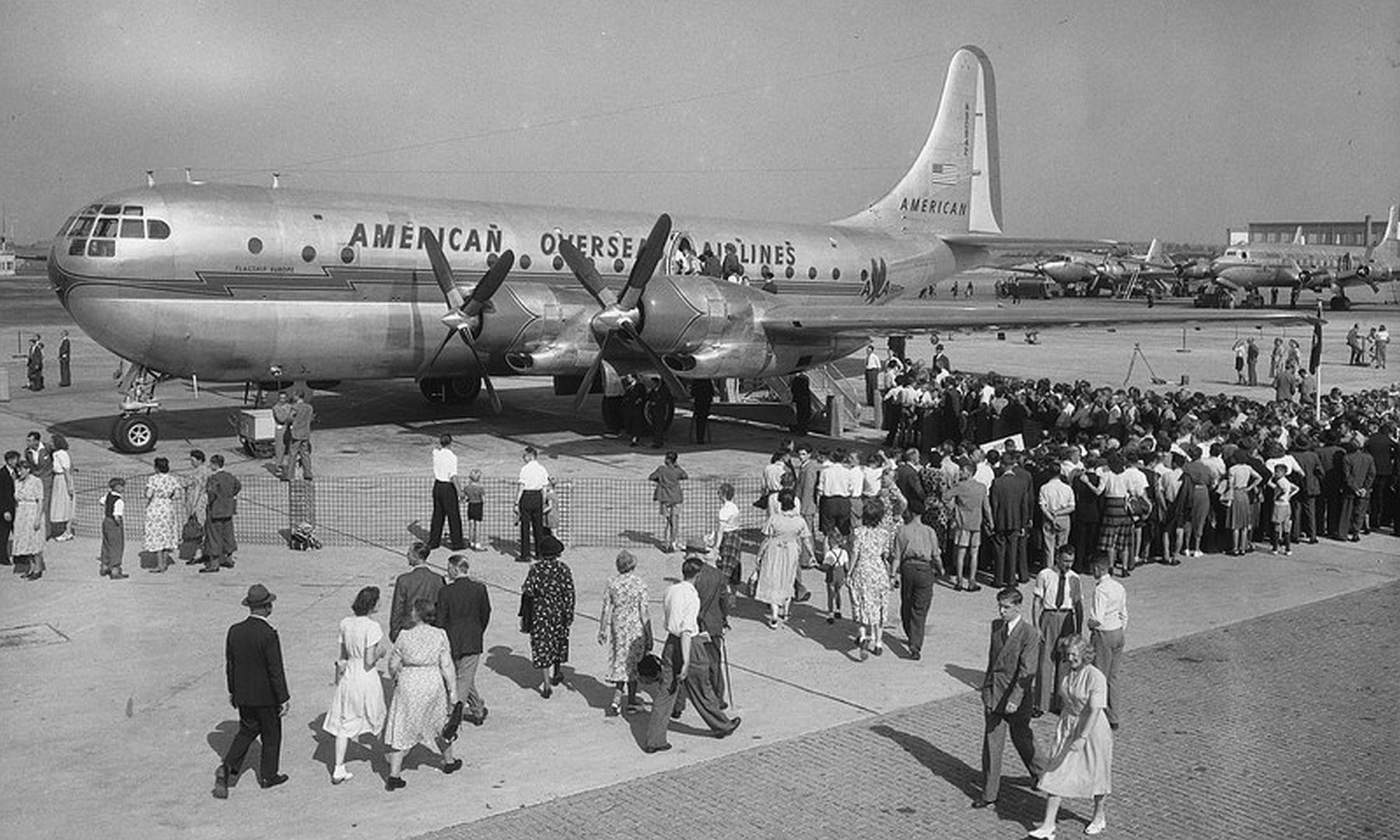
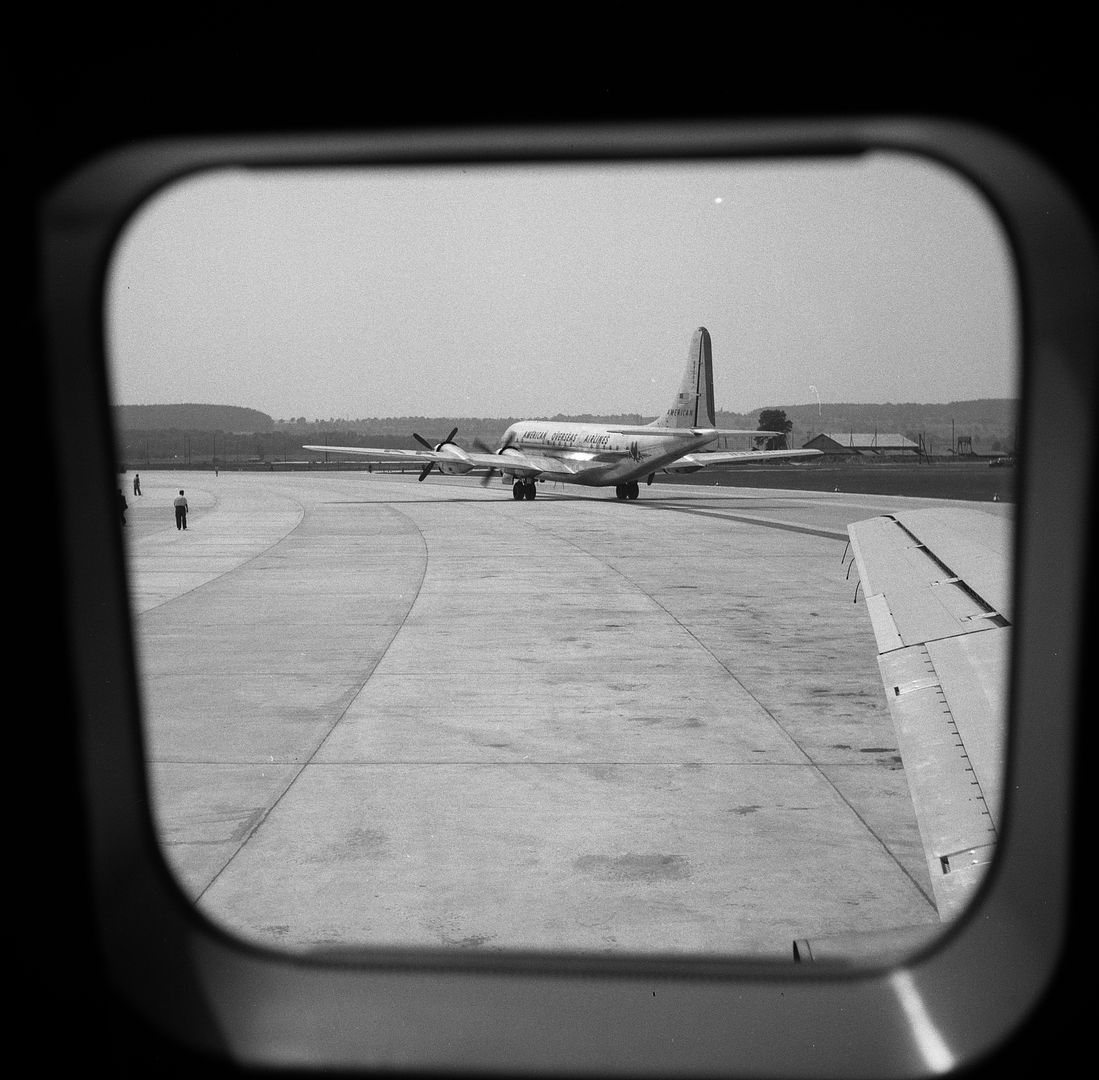
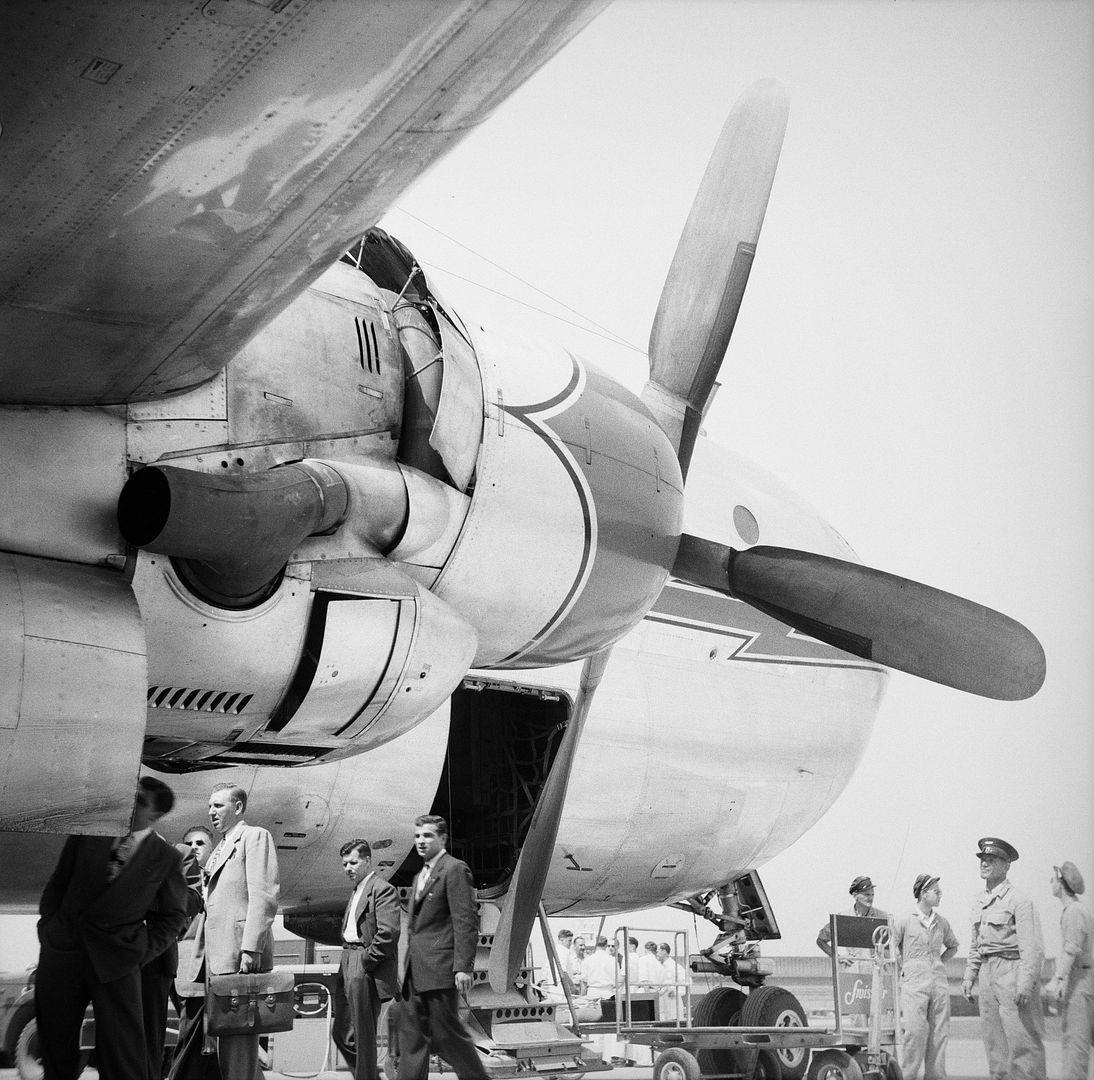

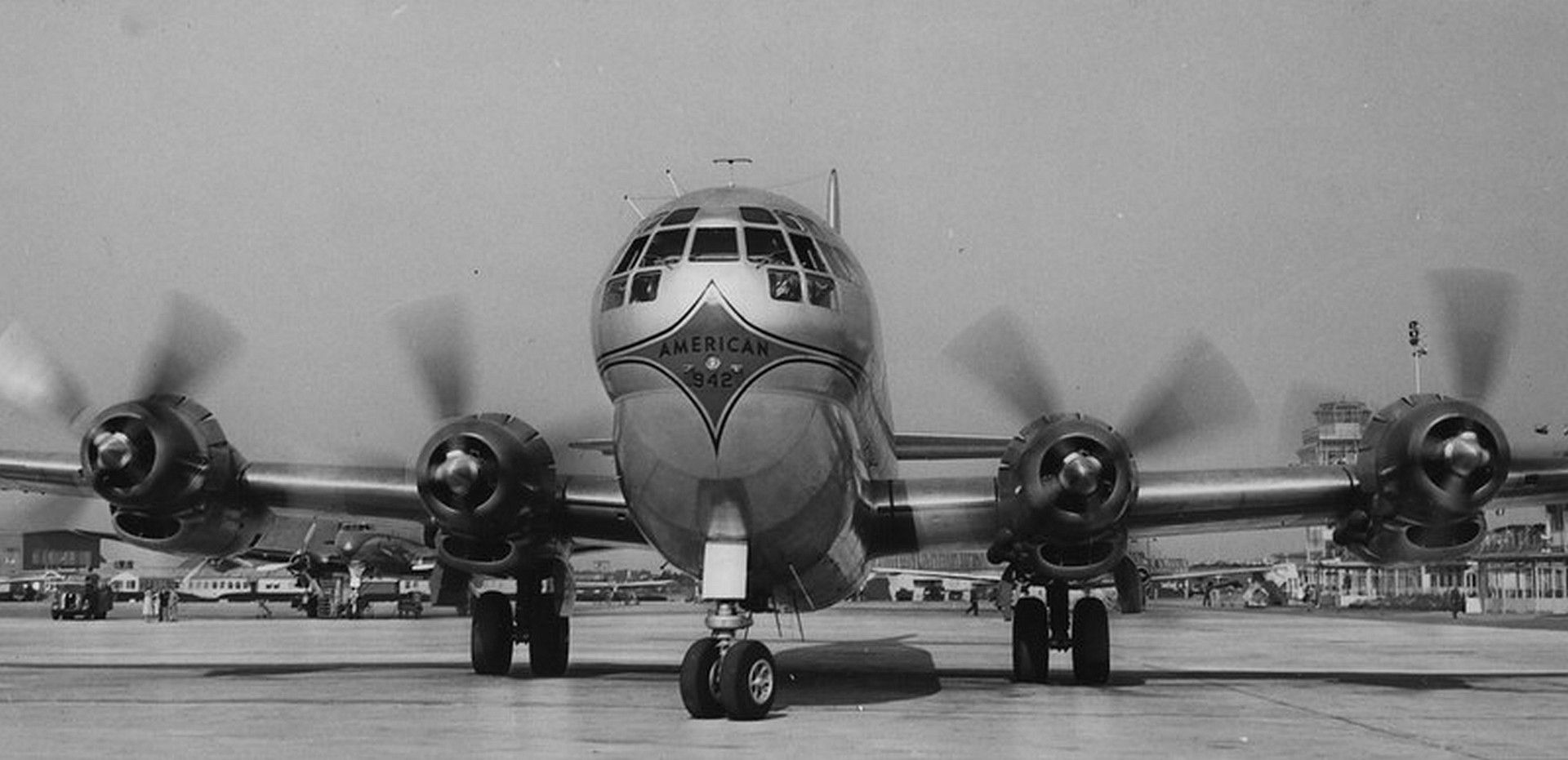
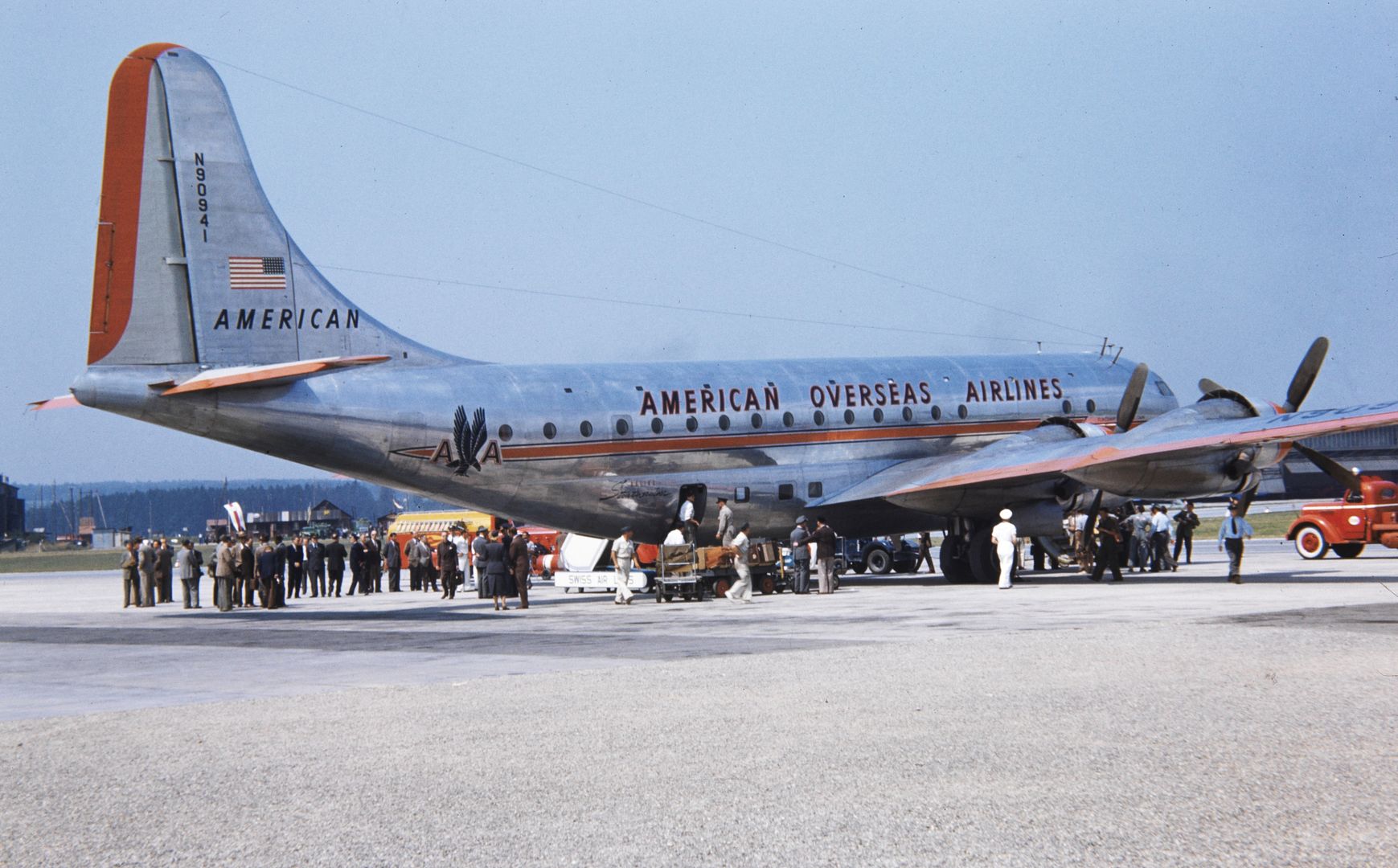


General characteristics
Capacity: Up to 100 passengers on main deck plus 14 in lower deck lounge; typical seating for 63 or 84 passengers or 28 berthed and five seated passengers.
Length: 110 ft 4 in (33.63 m)
Wingspan: 141 ft 3 in (43.05 m)
Height: 38 ft 3 in (11.66 m)
Wing area: 1769 ft? (164.3 m?)
Empty weight: 83,500 lb (37,876 kg)
Max. takeoff weight: 148,000 lb (67,133 kg)
Powerplant: 4 ? Pratt & Whitney R-4360-B6 Wasp Major 28-cylinder radial engines four-bladed propellers, 3,500 hp (2,610 kW) each.
Performance
Maximum speed: 375 mph (603 km/h / 326 knots)
Cruise speed: 301 mph (483 km/h / 262 knots)
Range: 4,200 mi (3,650 nmi, 6,760 km)
Service ceiling: 32,000 ft (9,800 m)
Max cruise: 340 mph (547 km/h / 295 knots)
Post a reply
- Go to Previous topic
- Go to Next topic
- Go to Welcome
- Go to Introduce Yourself
- Go to General Discussion
- Go to Screenshots, Images and Videos
- Go to Off topic
- Go to Works in Progress
- Go to Skinning Tips / Tutorials
- Go to Skin Requests
- Go to IJAAF Library
- Go to Luftwaffe Library
- Go to RAF Library
- Go to USAAF / USN Library
- Go to Misc Library
- Go to The Ops Room
- Go to Made in Germany
- Go to Campaigns and Missions
- Go to Works in Progress
- Go to Juri's Air-Raid Shelter
- Go to Campaigns and Missions
- Go to Works in Progress
- Go to Skinpacks
- Go to External Projects Discussion
- Go to Books & Resources
